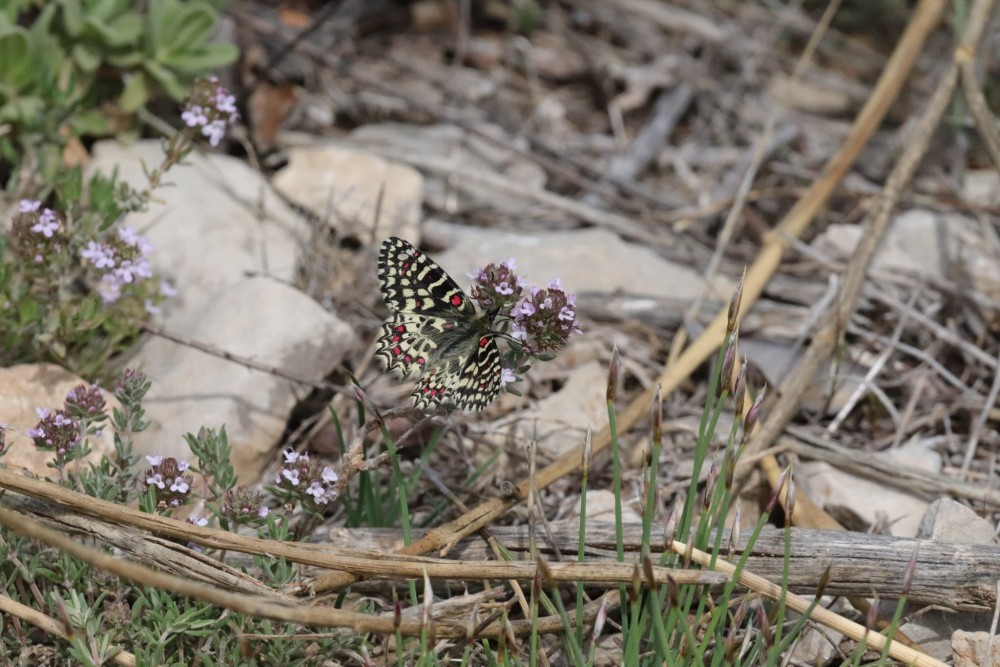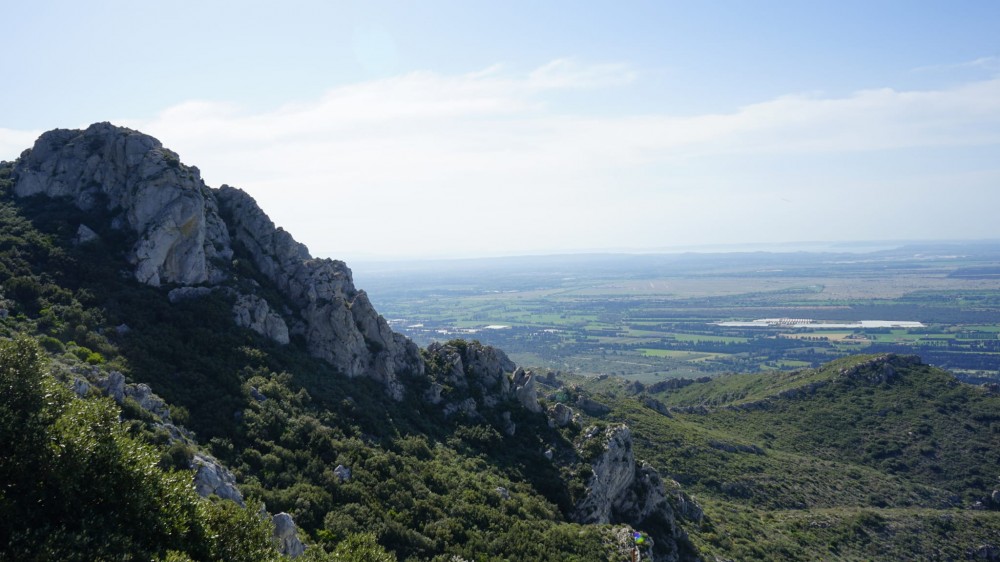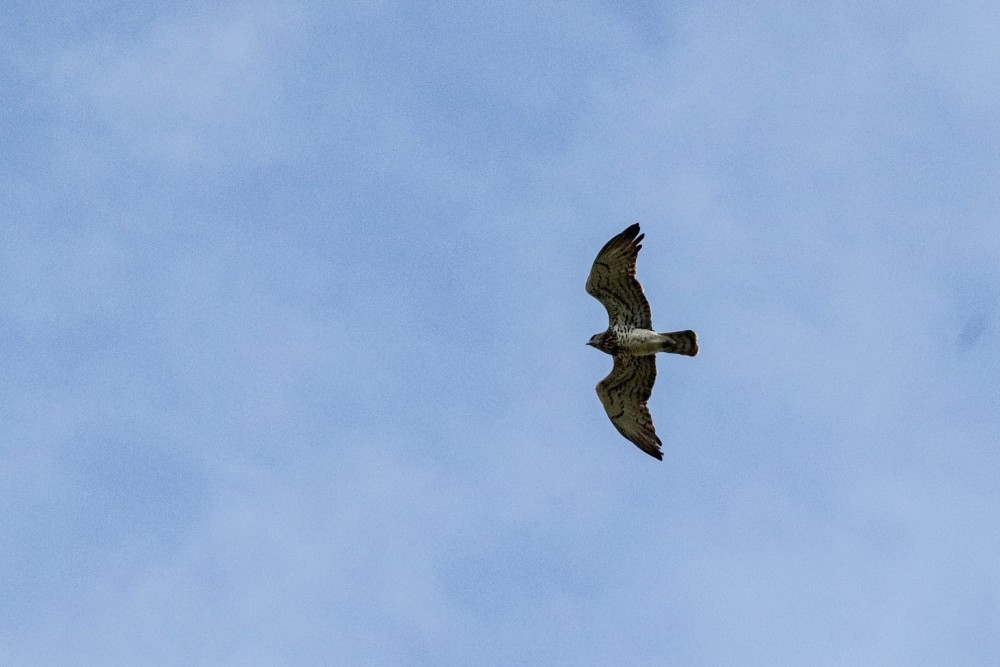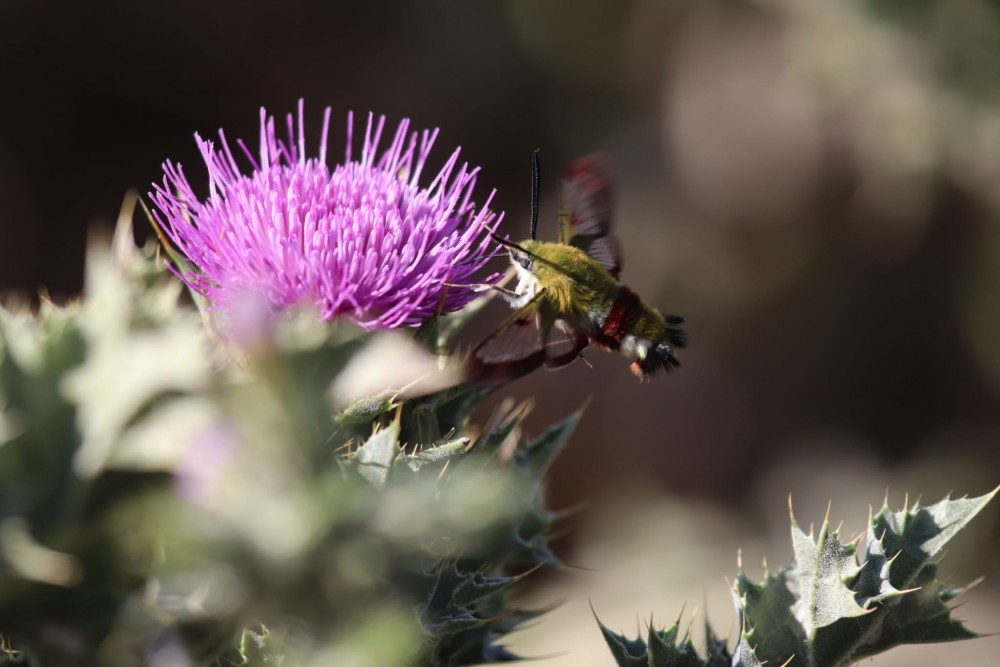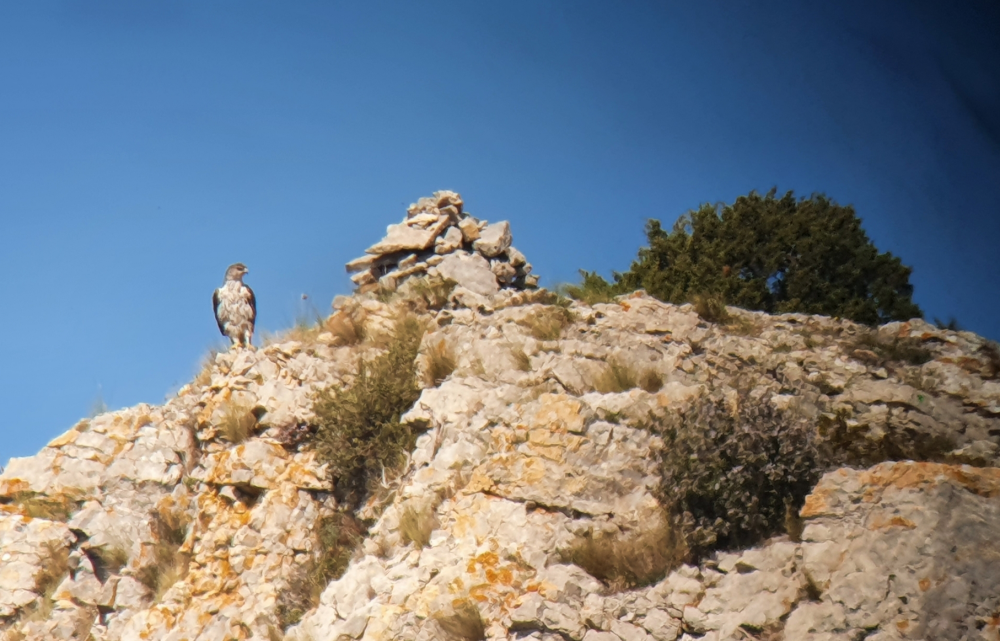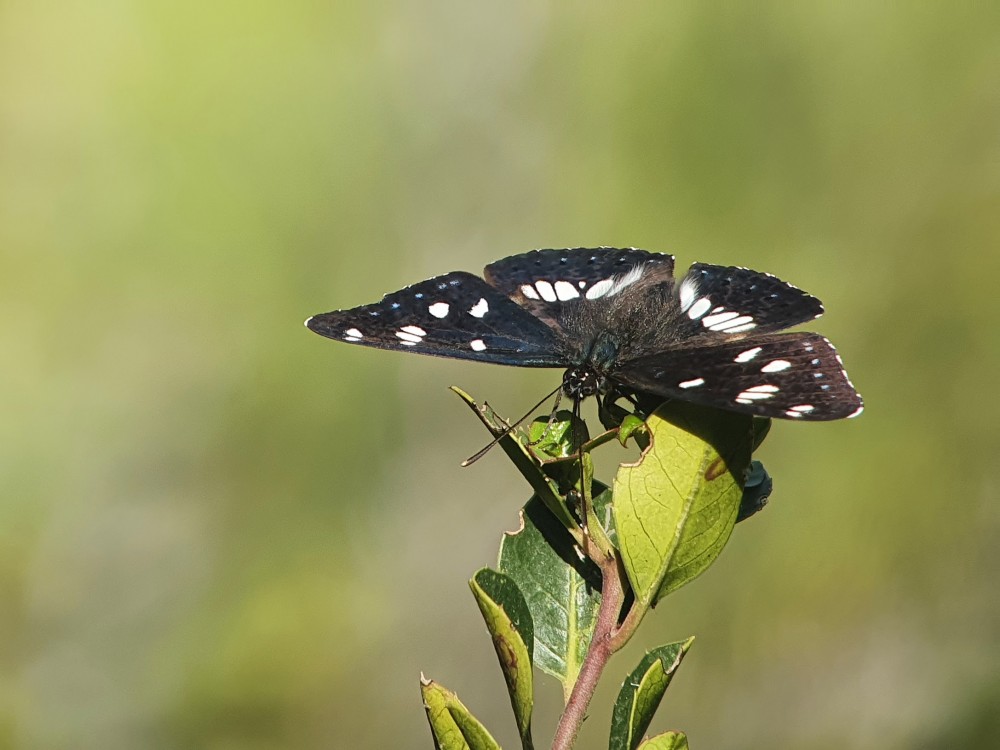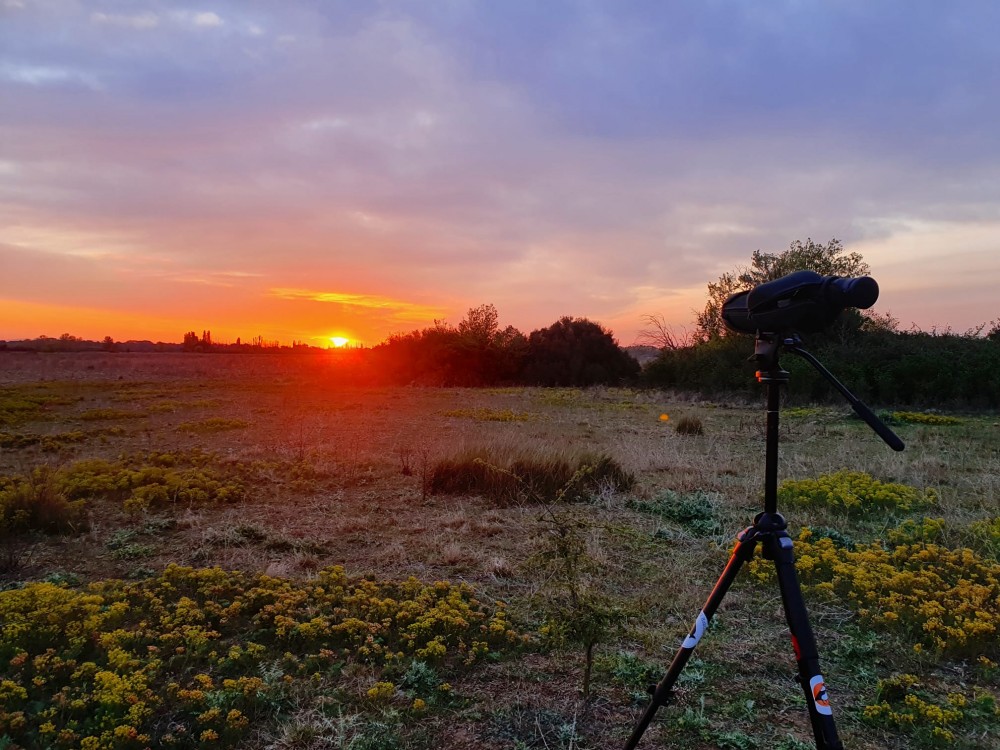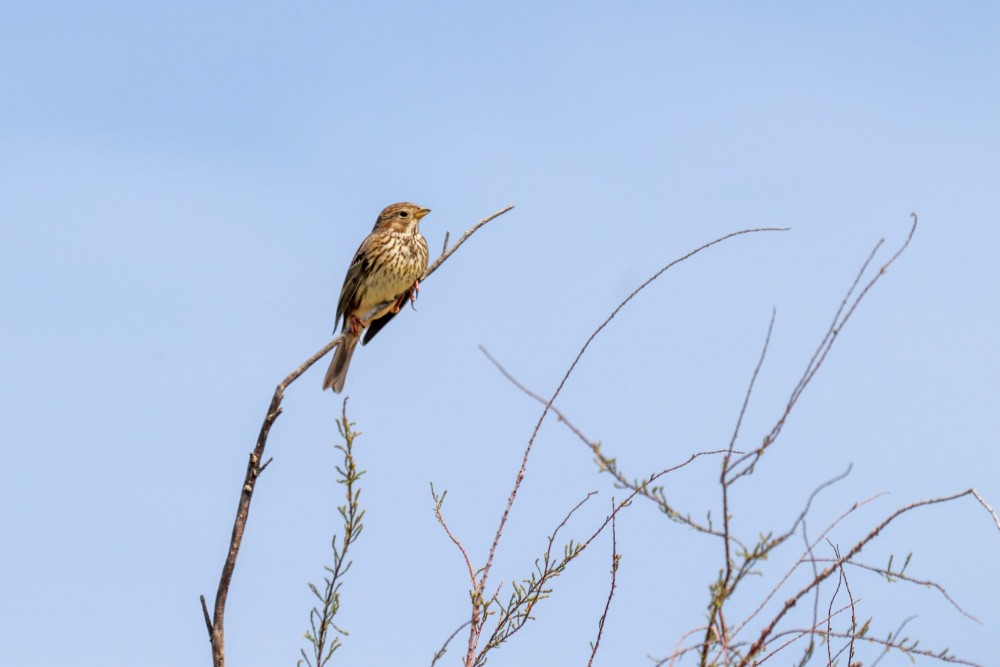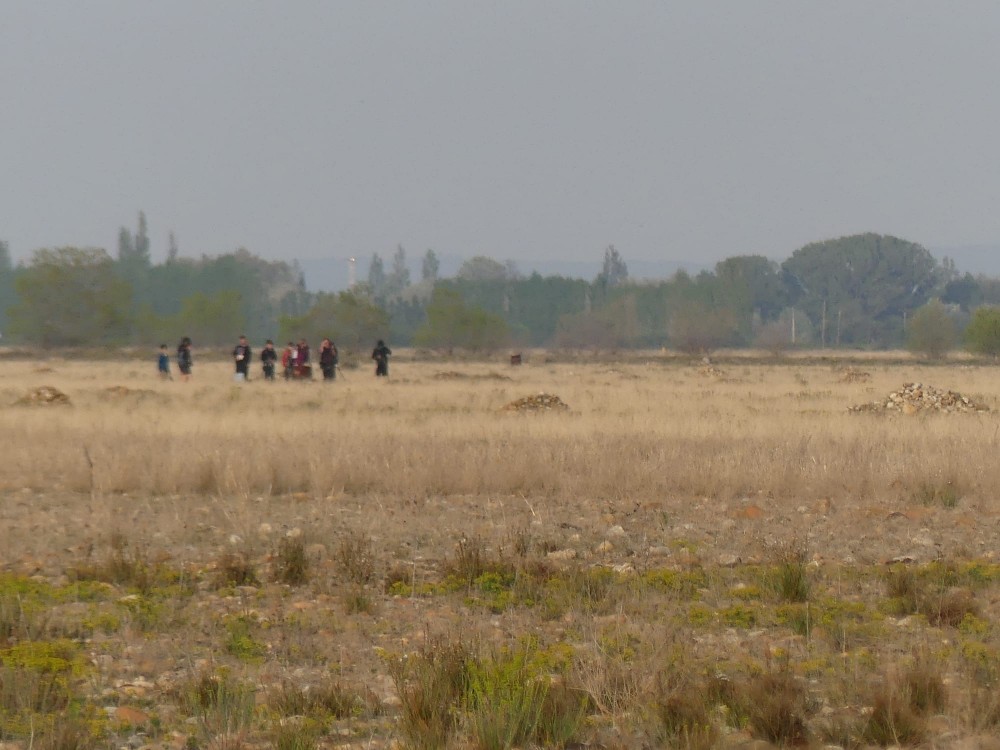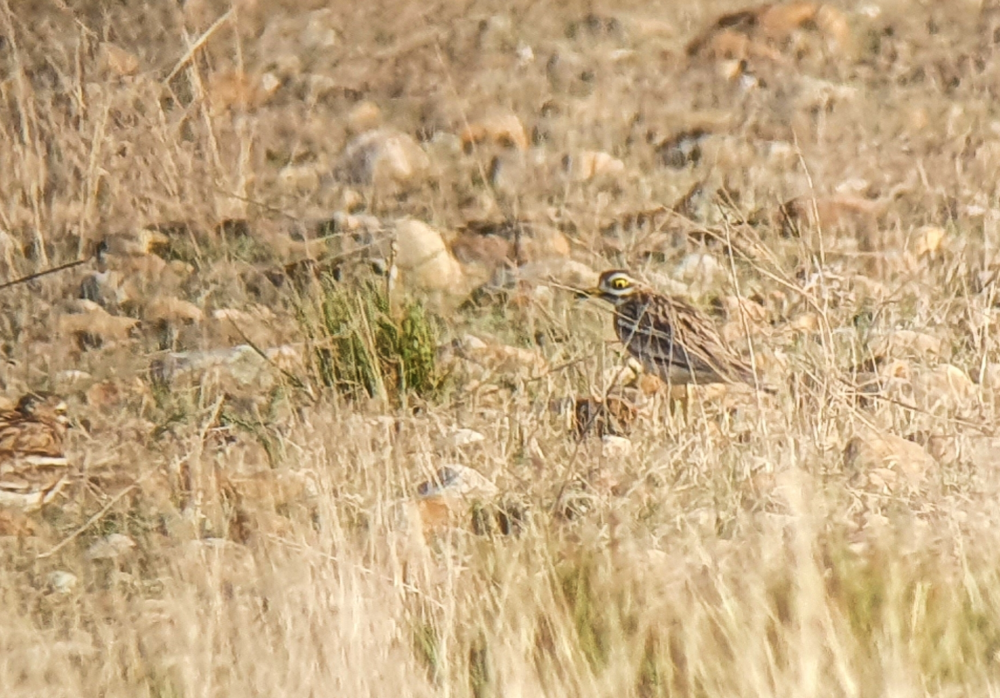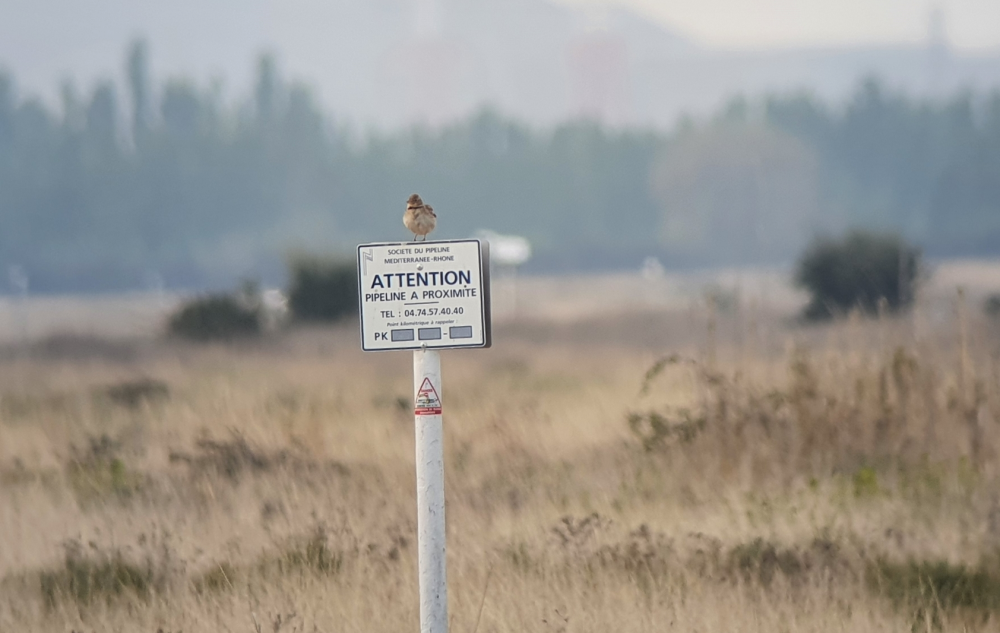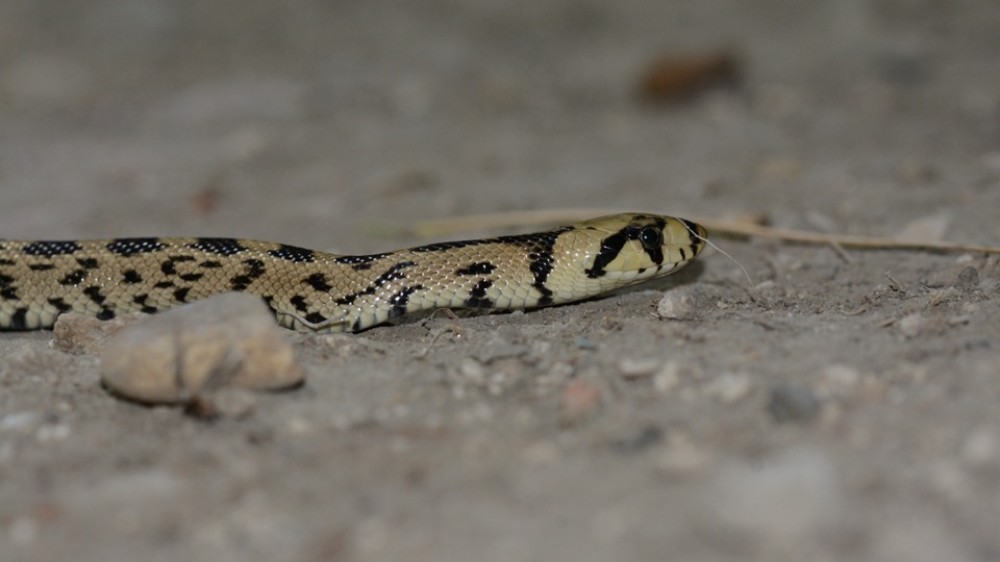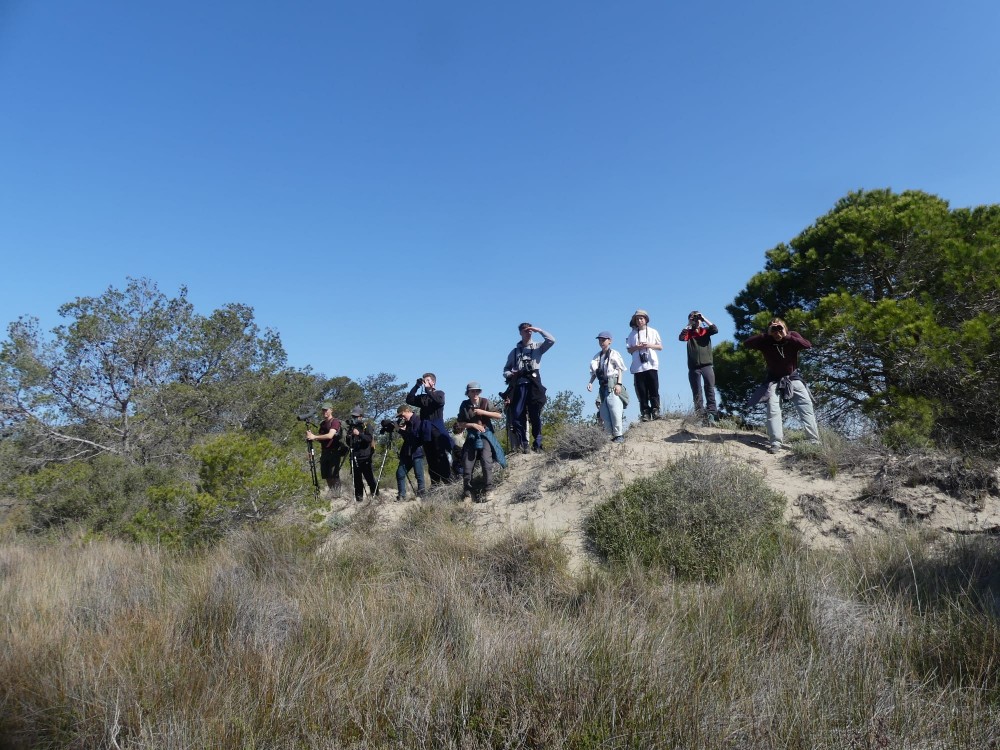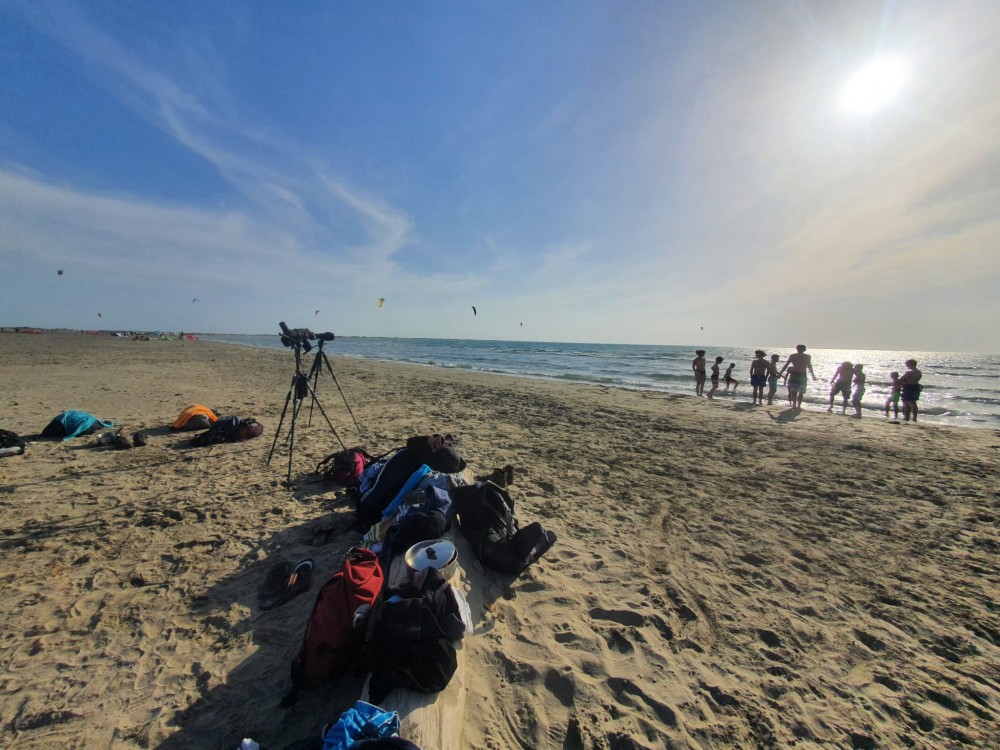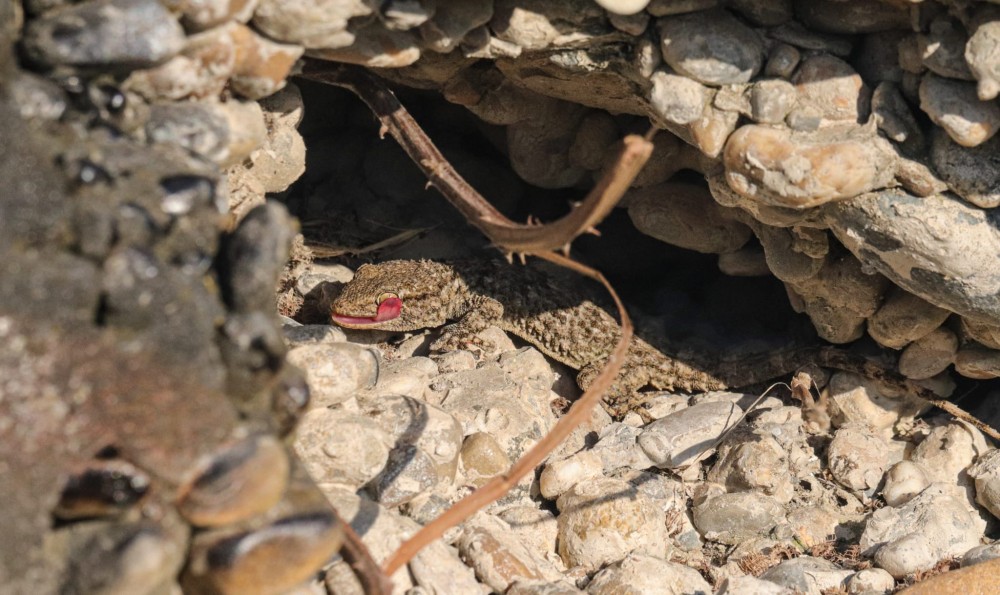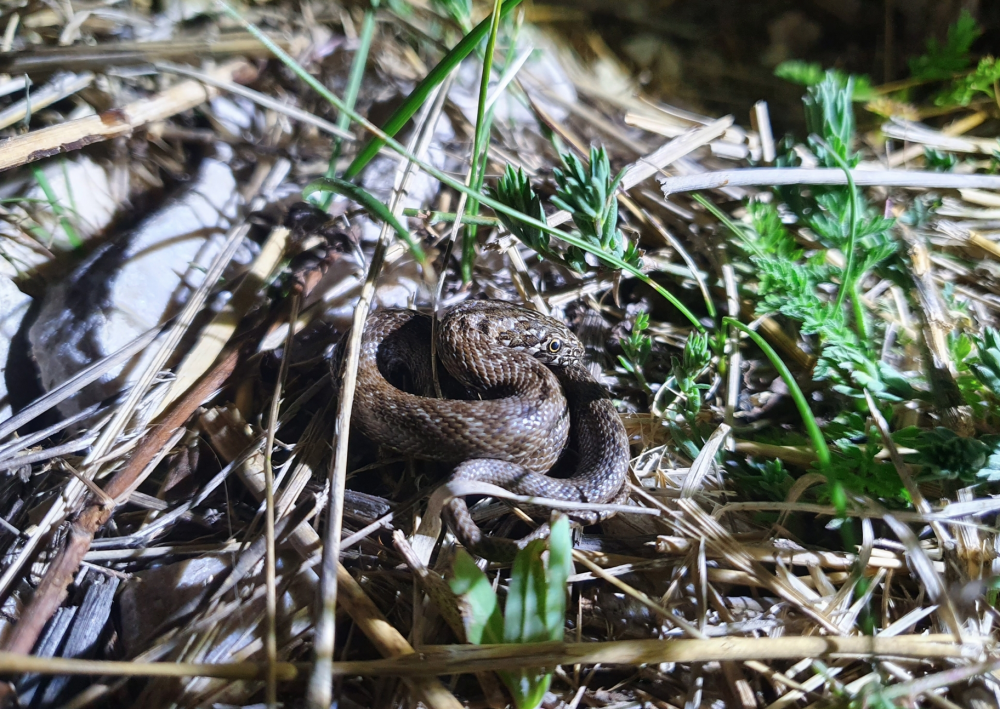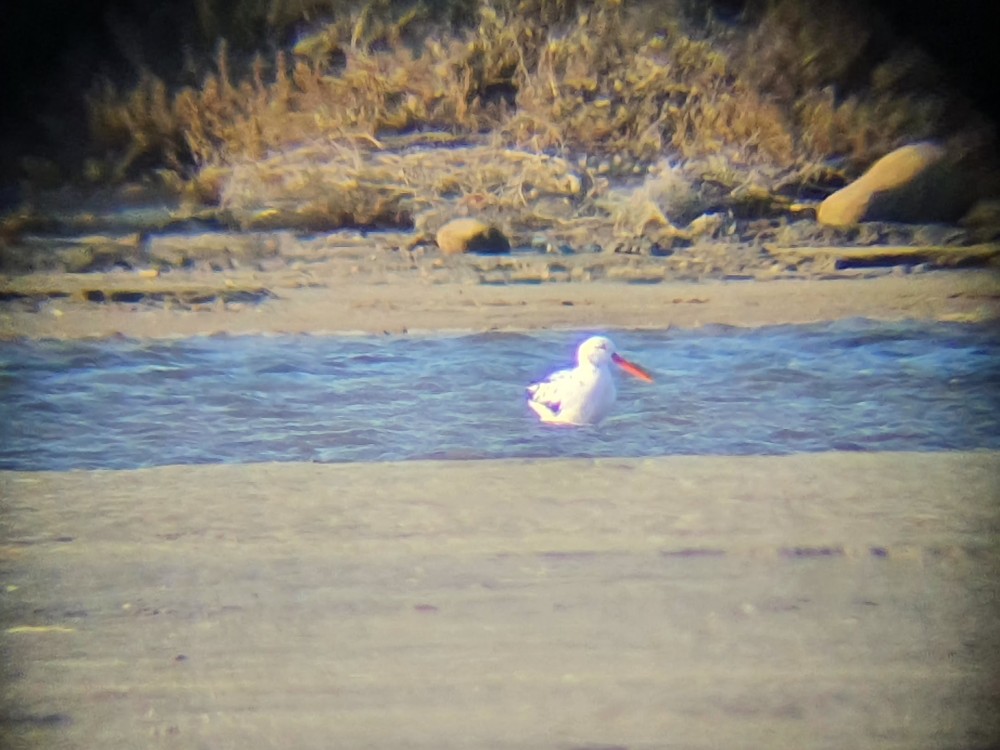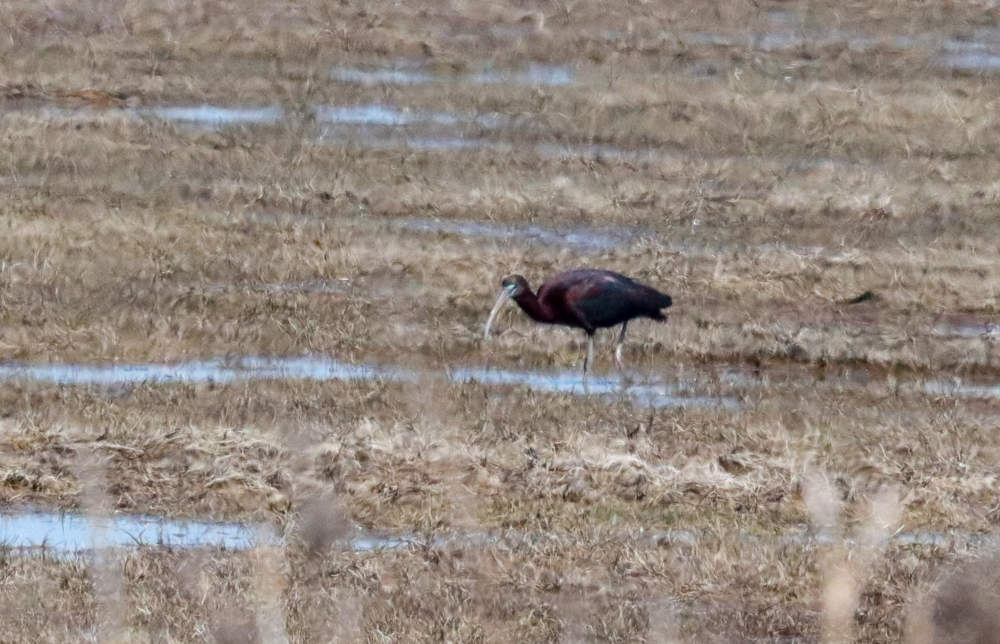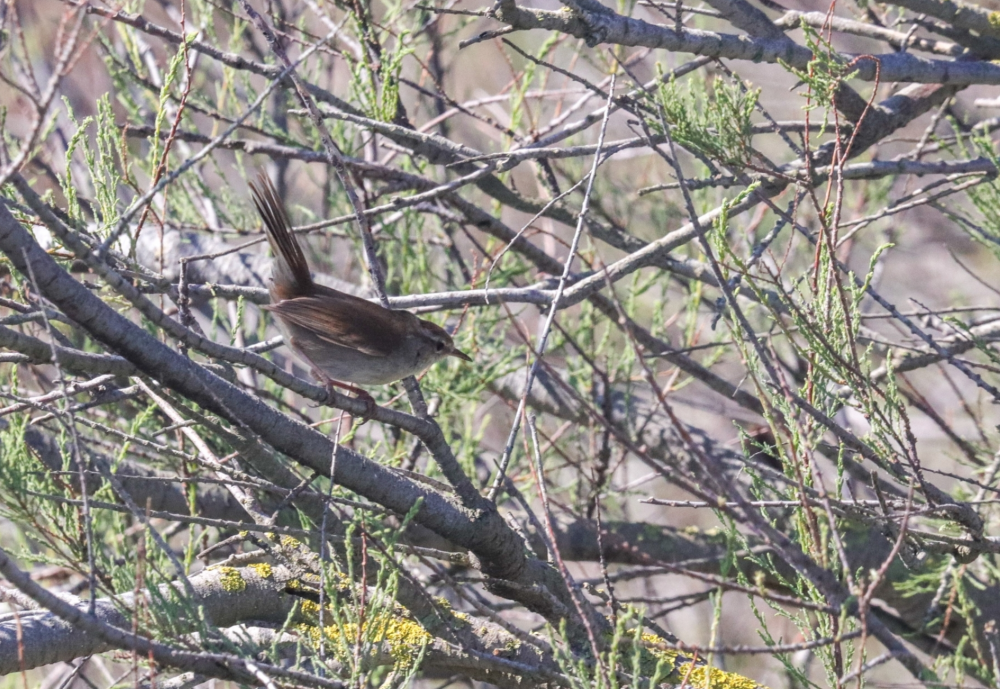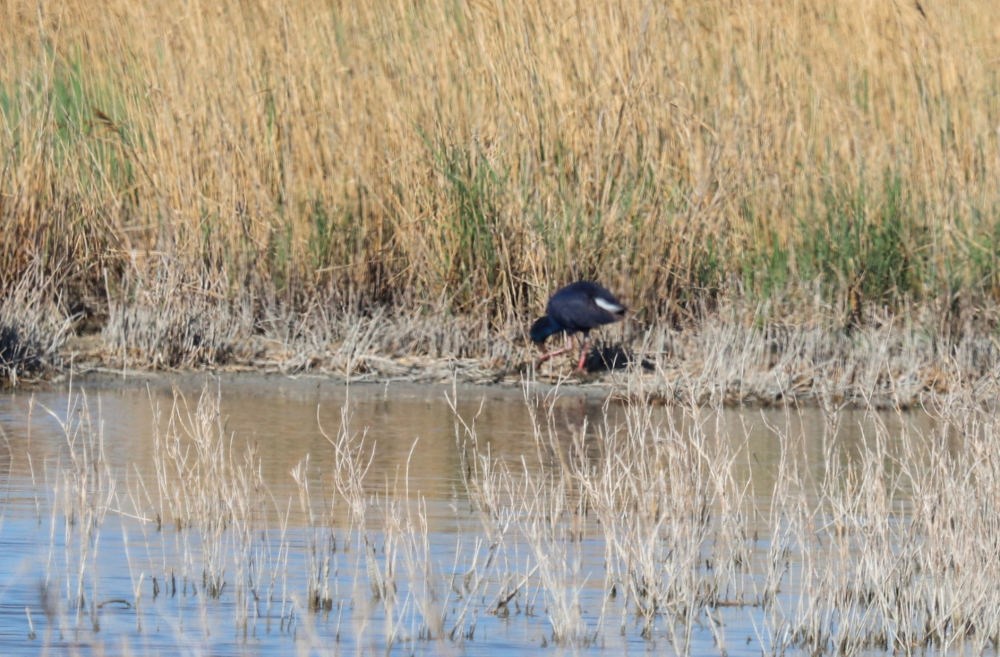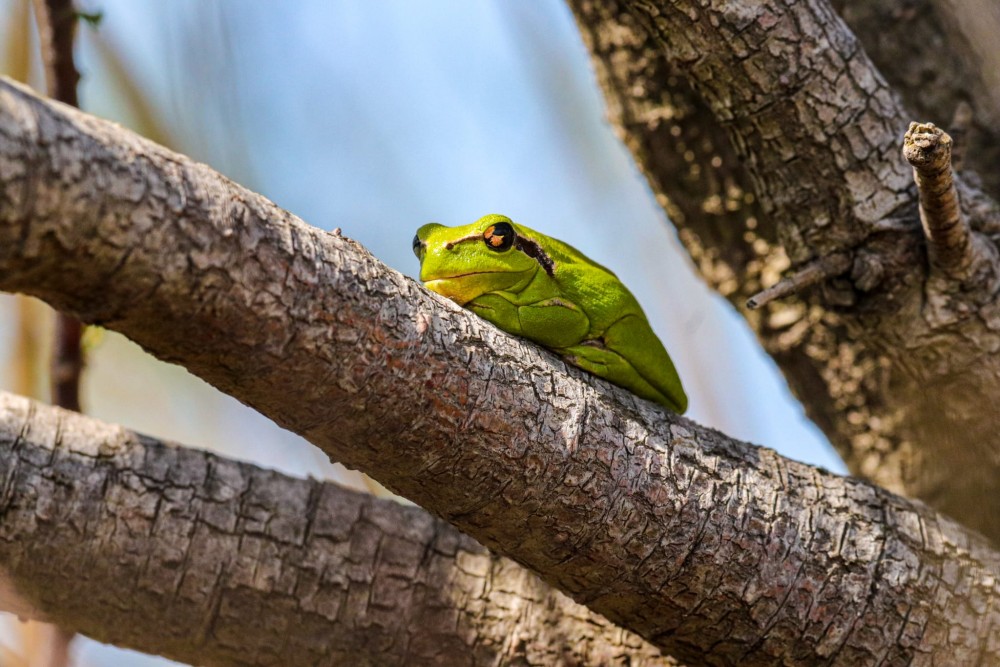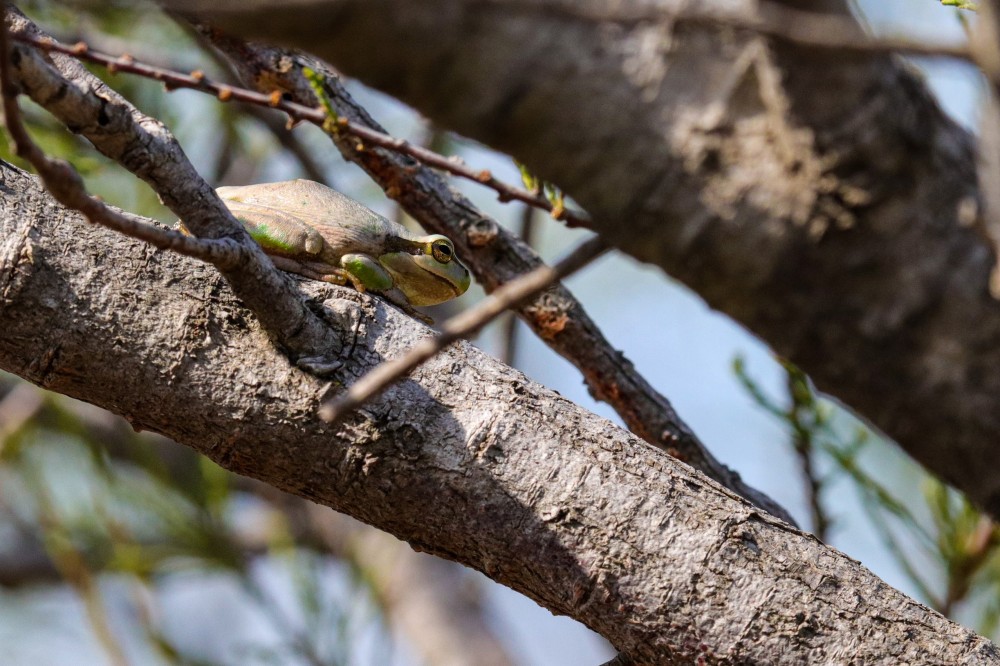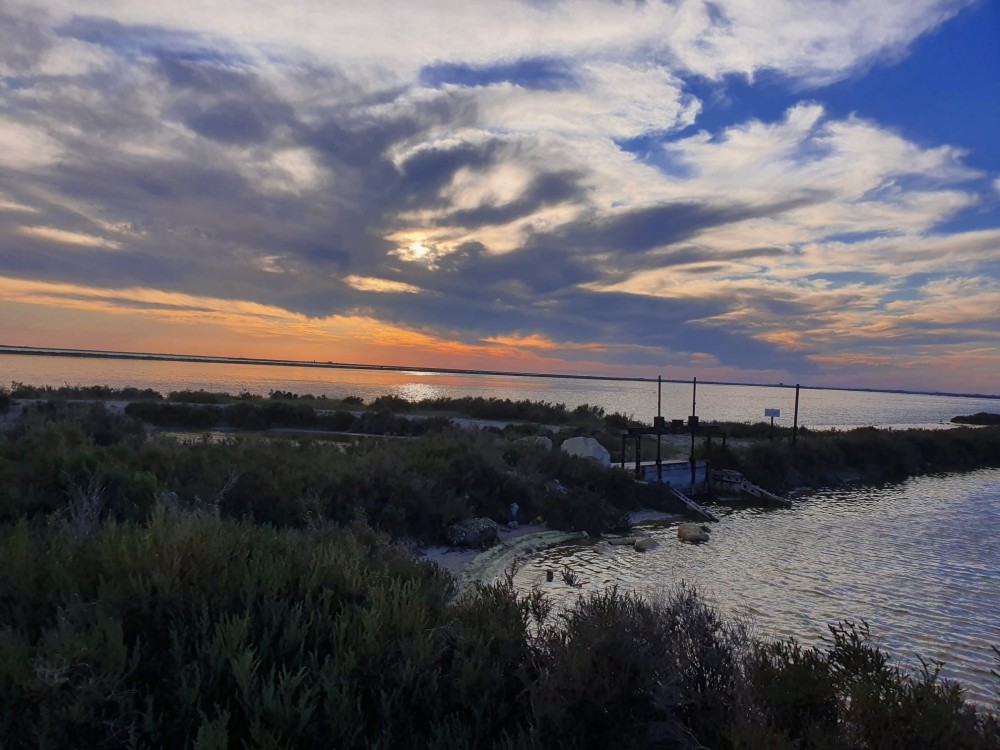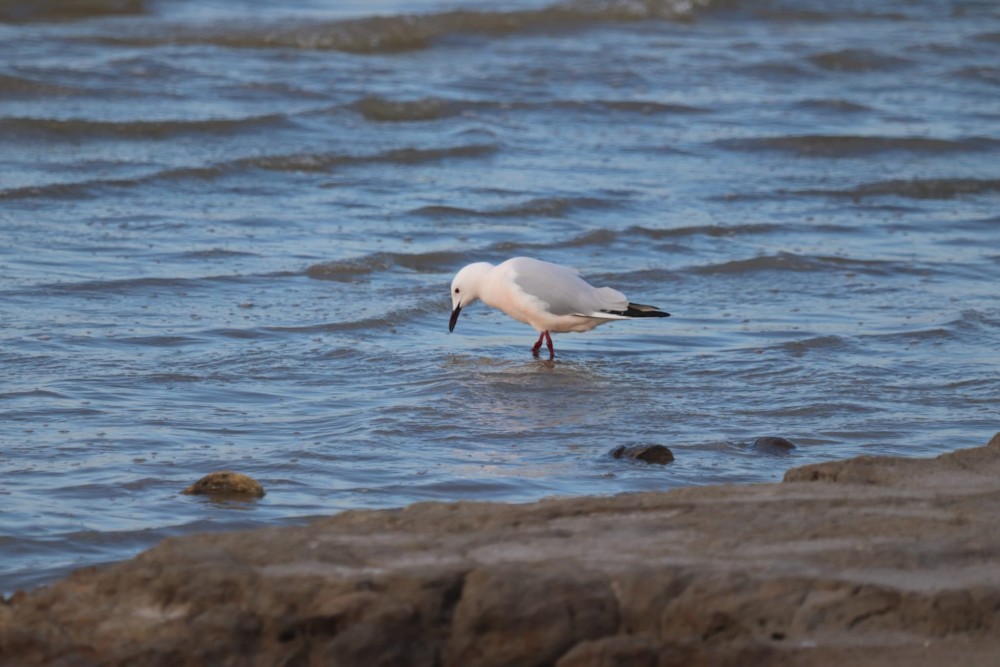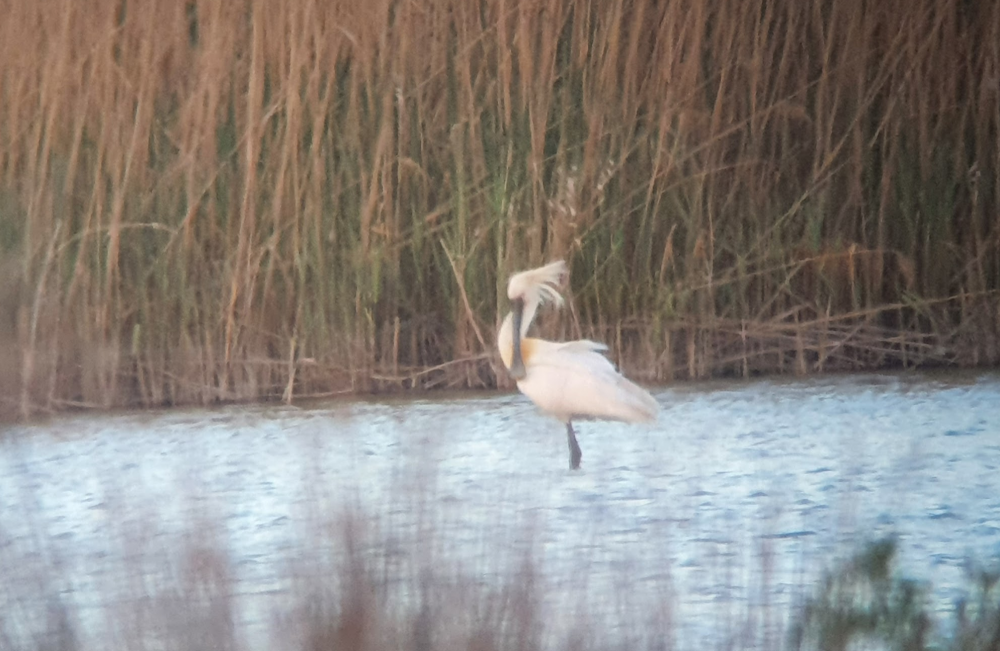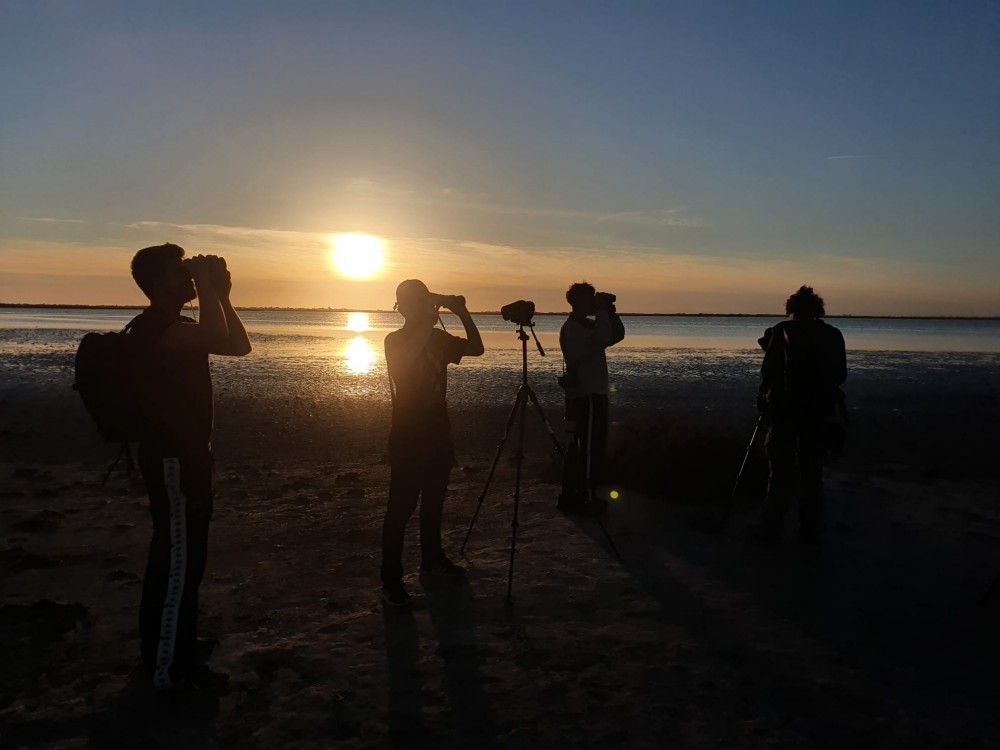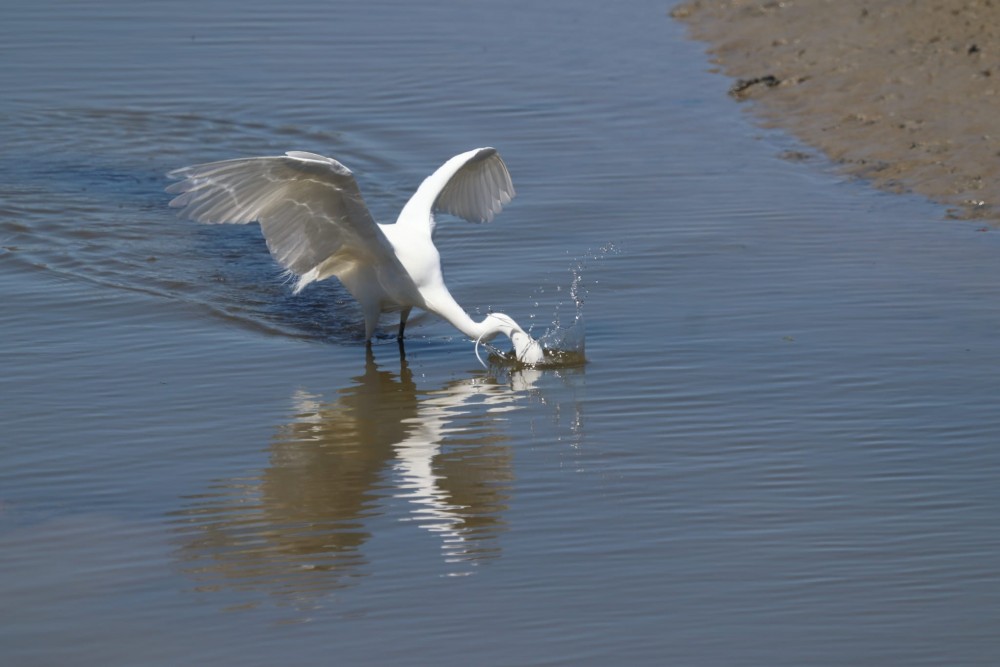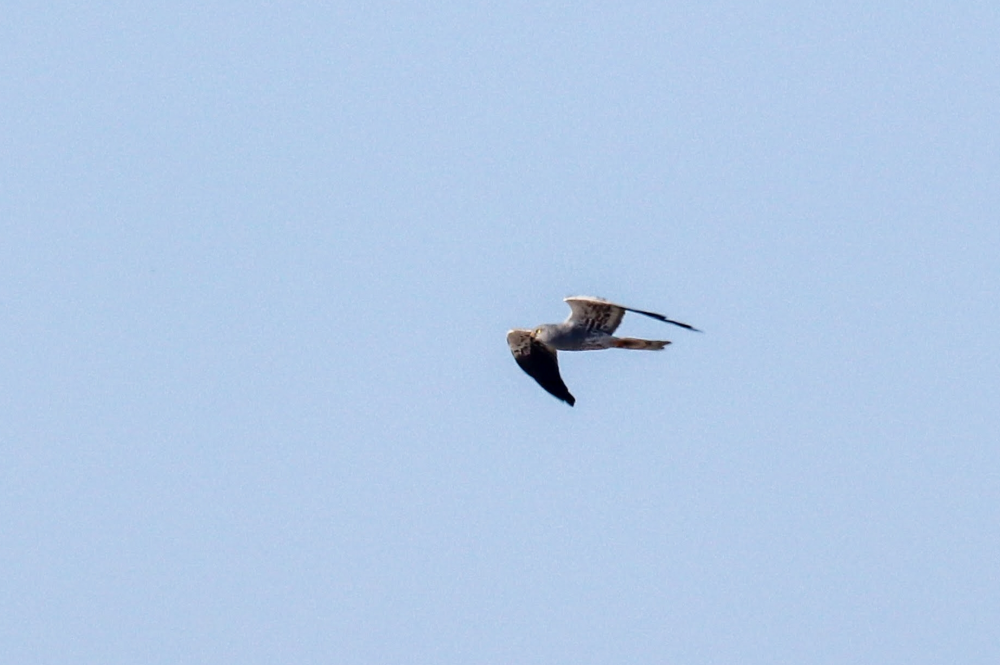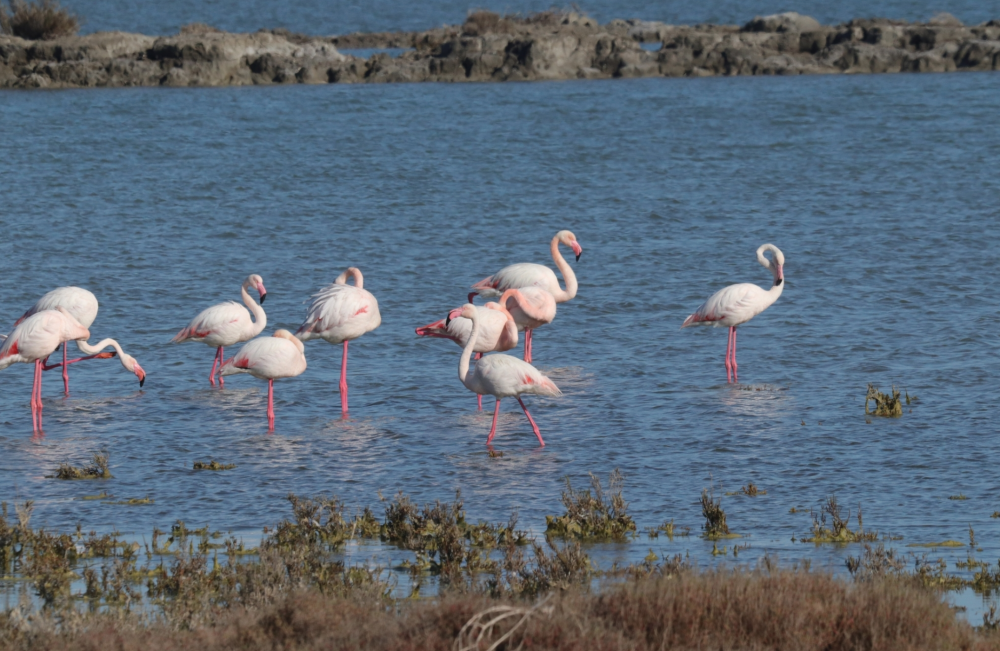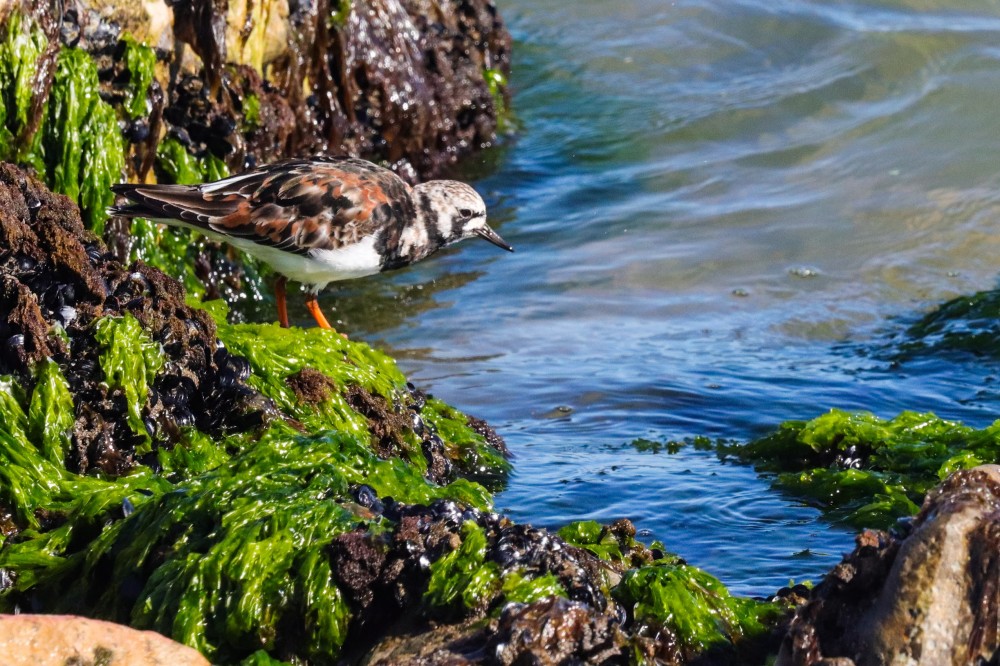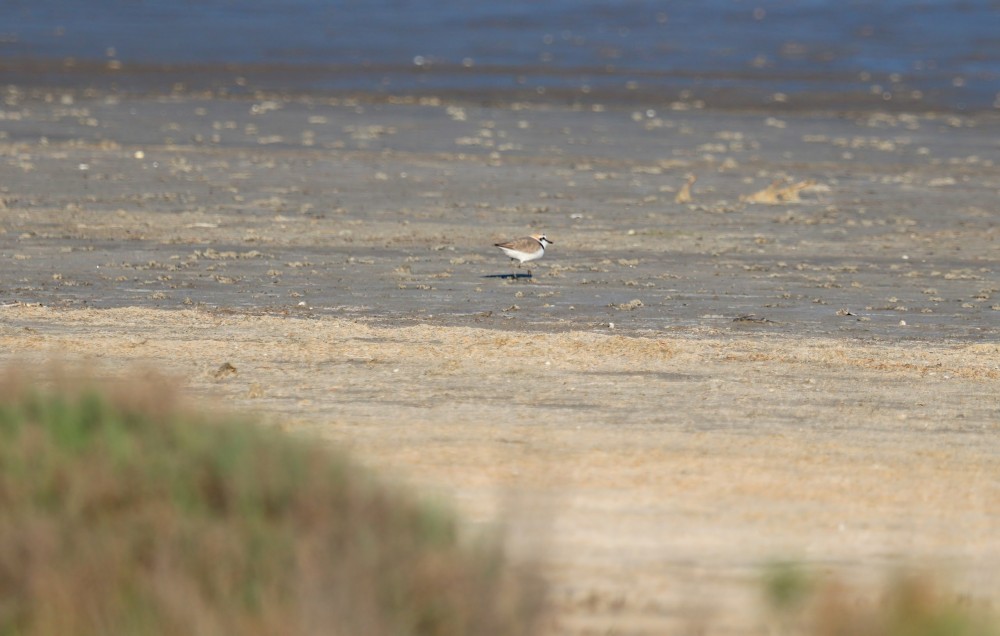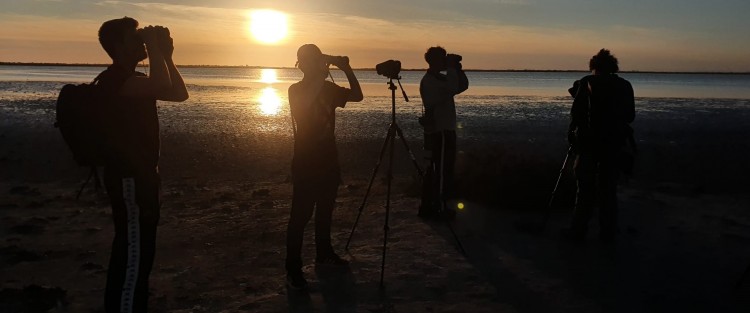
Camargue, Les Alpilles and the Crau with Bebbi Babbler Birding
13 April 2022 – 18 April 2022
The Bebbi Babbler, an ornithological youth group went to a trip to the Camargue. The trip report is written by Michel, Livio and Jonas, three of the young birders participating, with the support of Valentin.
Visited Sites
- Vallon des Opies 13 April 2022 – 14 April 2022, 17 April 2022 – 18 April 2022
- Beauduc area 14 April 2022 – 17 April 2022
- RN des Coussouls de Crau 14 April 2022 – 15 April 2022
- PNR de Camargue 15 April 2022 – 17 April 2022
- Route du Mas d'Agon 15 April 2022
- Saintes-Maries-de-la-Mer area 16 April 2022 – 17 April 2022
- Piémanson area 16 April 2022
- Domaine de Méjanes – Cacharel road 17 April 2022
Vallon des Opies
Vallon des Opies till Tour des Opies. Rocky coastal range, lot's of interesting birds and other wildlife, as well as interesting arthropods. Residents include Bonelli’s Eagle and Egyptian Vulture.
On the last morning, we were south of the valley, starting from Aureille.
RN des Coussouls de Crau
Remnants of the former Rhone delta, steppe-like habitat. Residents include Little Bustard, Calandra Lark and Pin-tailed Sandgrouse.
We visited two areas, Peau de Meau and Mas Chauvet
Beauduc area
Beach and dune habitat with migrants. The "gate" is good birding area as well.
Route du Mas d'Agon
Flooded field with a range of resident and migrant waterbirds.
PNR de Camargue
Listed here are observations we did while in the Camargue, but not specifically at one of the mentioned hotspots.
Piémanson area
Beach and salines - Slender-billed Gull is quite common here.
Saintes-Maries-de-la-Mer area
If one escapes the crowds of the city, the first bushes provide habitat for tired migrants, the étanges behind hold many waterbirds.
Domaine de Méjanes – Cacharel road
The "Safari Road" has some classical Camargue habitat and specialities like Purple Swamphen and Moustached Warbler.
Diary
13 April 2022: Arrival in the Camargue region
We arrived late in the evening. A dream landscape with its own vegetation awaited us. The slopes are covered with yellow broom and purple rock roses. Next to the car park, the last Sardinian warbler of the day was singing and in the olive grove, we could enjoy the song of a nightingale, giving us a taste of what was to come! When it was completely dark, we heard an Eagle-owl and far away also a Scops-owl. With our thermal we searched for mammals in the undergrowth and the moth light was running. No biodiversity was safe from our cameras!
14 April 2022: Vallon des Opies, Les Alpilles/ RN des Coussouls de Crau
In the morning we walked up the Vallon des Opies. The low scrubland is a paradise for warblers. We heard and saw several Sardinian and Dartford Warblers. Some Subalpine Warblers were also heard. Enjoying the singing Warblers, we spotted an Iberian grey shrike and two very shy Red-legged Partridge. Under a stone, we found a special centipede species that looks very cool (Scolopendra cingulate). The sun was shining and made the whole landscape appear in full bloom. The low vegetation offers little shade and with the rising warmth, the insects come out, we could observe many butterflies. A common species is Gonepteryx cleopatra, the southern related species of the Brimstone butterfly. As a big highlight, we spotted a Spanish Festoon (Zerynthia rumina).
Also the fauna is very rewarding to see. Besides various bush vegetation such as broom, rock roses and rock pear, we also found two orchids and found a rare Mediterranean flax with a generally small distribution area (Linum campanulatum).
Now back to the birds. Not only the insects benefited from the sunshine, but also the birds of prey took to the air. We spotted a Bonelli's Eagle on the ridge north of the Vallon des Opies. He was sitting on a rock and could be observed through the telescope. In the higher altitudes of the valley we saw several Blue Rock-thrush and Rufous-tailed Rock-thrush, two species typical for this habitat. The ascent to the Tour des Opies is steep and it requires climbing over rocks. When you have made the strenuous ascent, a breathtaking view awaits you. You are at the highest point in the area, and you can see in all directions. In the South the land becomes flatter towards the sea and in the North the mainland stretches out. In a westerly direction, the Alpilles extends. From up here we saw a lot of raptors like a Hobby, an Osprey, some Black Kites, Common Buzzards, Sparrowhawks and also one Short-toed Snake-Eagle. And suddenly, far away, we spotted an Egyptian Vulture who was coming straight toward us. He flew past us to the north and gave us the opportunity to gaze at him. What an impressive observation! It made the steep climb worthwhile. Also, the Bonelli’s Eagle made a visit to the Tour des Opies and flew close over our heads. After a short break, we set about the descent. On the way back we were able to see some Spanish sand racer (Psammodromus edwarsianus) which has a small range of distribution from eastern Iberia to southern France.
Further down we were visited by four Eurasian Griffons Vulture which flew very far over Aureille. Almost back by the cars another Short-toed Snake-Eagle passed very near over us. A beautiful finish of this morning.
Crau
In the afternoon we drove to the Crau. To be more precise, we went to the Réserve Naturelle des Coussouls de Crau. The Crau is a large steppe-like plain, the former riverbed of the river Durance. We parked our cars at the parking Peau de Meau (43°34'17.6"N 4°49'54.8"E). Dozens of Skylarks and some Crested Larks were signing. We could also see some Tawny Pipits. At a crossroad, we decided to split our group to scan more areas for Sandgrouse and Bustards. We had walkie-talkies and stood in contact. Of course, when we were really distant from each other, looking at a few pairs of Stone-curlews, the other group discovered a Little Bustard in the opposite direction. That’s why at 07:15 pm a group of young ornithologists ran through the Crau! Luckily, they arrived in time and were able to see the great Little Bustard in wonderful evening light before it disappeared into the steppe. The final species of the day were a pair of Lesser Kestrels at a small shepherd's house, settling for the night. Back at the cars, we drove to our sleeping area. We were welcomed by a singing Nightingale and had a late dinner. We heard many Mediterranean tree frogs on a flooded meadow nearby.
15 April 2022: RN des Coussouls de Crau/ Camarque
We were accompanied by singing Corn Buntings and started early. The morning was foggy and a bit cool. Just when we arrived in the steppe (43.573741, 4.885414), we spotted a flock of Corn Buntings which is very nice to see if you are from Switzerland (where “efficient” agricultural practices have driven this species close to extinction). Next to the path we could see a Crested Lark. We were still accompanied by many singing Skylarks. Further in the steppe, we spotted several Little Bustards because here is the vegetation lower than at the spot we were yesterday. We were even lucky enough to see a flying Bustard. This looks somehow weird but very special. Its flight is incomparable to that of any other bird. We also spotted a Merlin which was hunting over the steppe.
As we continued walking, we first heard and then saw a Hoopoe. Then we were surprised by an unusual guest, a Caspian Tern flew over our heads.
With the time, the fog disappeared, and it was getting warm. We discovered a singing Calandra Lark in the Sky. Further forward we saw sever others. There is obviously a bigger colony. We counted at all about 15 singing Calandra Larks. They were singing from the Sky and around us in the steppe. Now and then they set down on wooden posts or single bushes. It was a unique concert. A part of our group set off on her way back and the others stayed to enjoy the Calandra Larks a little longer. When we caught up to the others, they had already found a new sensation. They had seen two Richard’s Pipit which flew above them! We searched the area together and were successful. The rare birds came back. By walking back to the cars, we have seen some Iberian Grey Shrikes, a Woodchat Shrike, and several Corn Buntings. Back by the car, we ate lunch. Next to the parking place was a Western Subalpine Warbler singing. While eating, we spotted a raptor and we identified it as a Bonelli’s Eagle. We saw a Common Kestrel which landed on a tree right in front of us. He had prey in his claws. When we looked more closely, we saw, that it was a reptile. More precisely a Western three-toed skink which was still wriggling, so it was probably still alive (and countable!).
On the gravel road back to the main street, we saw about 15 Cattle Egret. As everybody was a bit dusty, we decided to head towards the beach!
On the way to the Camargue we saw the first water birds like Glossy Ibis, Black-winged Stilt, Gull-billed Tern, Kentish Plover and -of course- also the first Greater Flamingo. By chance we discovered in a bush at the roadside a few small Mediterranean tree frogs. We could observe them very well! Driving towards Beauduc beach, there were thousands of wading birds on both sides of the road, most of them Little Stint and Dunlin. In the late afternoon we finally reached the sea and had a swim, followed by a little race (won by Milan Usain Bolt) on the beach.
In the evening we came back to prepare dinner and to look for birds in the dunes, finding two Red-legged partridges and Woodchat shrike. Later we ate a delicious dinner in the dark, couscous with vegetables, before people headed off again to search for some nocturnal marine life and moths.
16 April 2022: Camargue
The next morning, after the delicious (again!) morning meal, we made our way back into the bushes and the dunes, looking and finding some warblers. Behind the dunes was a lagoon where we spotted a few waterbirds like Grey Plovers and Oystercatchers.
A flock of Little Ringed Plover kept flying and landing again, which looked extremely cool. But upon closer inspection, we realized that one of the oystercatchers was an albino oystercatcher! When we returned, someone suddenly said over the walkie talkies that they had seen a Great Spotted Cuckoo. Immediately we all ran! When we finally arrived, the Cuckoo had flown into a forest. After an hour searching, we had to admit defeat and headed back. We set off again and drove to Salin-de-Giraud. But to our disappointment, the stores were closed – midday... That did not help the general mood. To help wait for the food (the “food car” was stuck in Easter traffic trying to catch the ferry back) we went to the beach where we jumped into the sea. A bit of sea watching produced a Gannet. Then in the late afternoon finally came the relief, the food was there. On the way to our sleeping place we saw many Slender-billed Gulls, Spoonbills and Flamingos. At the lagoon, we enjoyed the beautiful sunset before we went to our sleeping place. At the sleeping place, we put up our tents in the strong wind and went on a little frog excursion. We heard loud frogs everywhere but could only find one. Nevertheless, we returned happily and cooked dinner on the gas stove. After the delicious dinner (which included a couple of chilies too spicy for some) we lay down in our tents. Well not for long, we were awakened a few minutes later by the leaders, who had discovered two snakes, a Ladder Snake and a Viperine Snake. We admired these beauties!
17 April 2022: Camargue
Up at dawn as usual, those who wanted to could go on a short morning excursion. Accompanied by the song of the Corn Bunting, we could observe Common Snipe and Wood Sandpiper. After a short morning meal, we continued by car through the Camargue. During a drive with many ornithological stops we could admire a Merlin, followed by Hen Harrier and Montagu's Harrier shortly after each other. In the lagoons, there were waders everywhere! We had a first longer stop in the Marais de Carachel aka "Safari Road". Here we could see the first Purple Swamphen of the camp. The stop was also worthwhile in other respects. Spoonbills, Spotted Redshank and a Crested lark were easy to observe. A European pond Turtle was also seen basking at the edge of the ditch. After an intense morning, it was now time to take a lunch break for both us and the birds. In the nearby town of Saintes-Maries-de-la-Mer, the younger participants were able to go on a short shopping spree while others bought the food for the next two days. Unfortunately during lunch, not just vegetables were cut, Leo's hand had to suffer too. However, this did not stop him from extensive birding! Before that, however, there was probably the rarest species we saw here. An Eastern Subalpine Warbler! It was hanging out in a bush with Western Subalpine Warblers, allowing nice comparisons of looks and calls. While there, some of our group searched for crabs and other small animals on the rocky shore. More successful was a round of beach football with almost all the Bebbis and some locals and other tourists. Besides that, there were also some birds to admire. Among others, 13 turnstones and a Slender-billed Gull paid a visit. At 5 pm we went back to observing birds and the next few hours were perhaps the best we had in the Camargue from an ornithological point of view. First, we saw Ruddy Turnstone again, also from very close. Other waders here along the sea were Sanderling and Little Stint. We were also very happy to see a Little Tern. However, with the density of birds, the density of mosquitoes had also risen sharply. When we started to think about the way back, we had a short break, during which we saw Spectacled Warbler and Montagu's Harrier. On the way back, a veritable wader party began. We saw no less than 1500 Dunlin, 300 Little Stint, 17 Curlew Sandpiper, 30 Little Ringed Plover and 100 Little Ringed Plover from and near the Digue à la Mer. At the very end, some rats appeared in the twilight. After a short dinner on the dark beach, it was time to leave. We drove back to the Alpilles, very close to the place where our journey began. Here we saw the first Scops Owl, after we had only heard it before.
18 April 2022: Back in les Alpilles!
The next day was our last here. It started a bit chaotic, as everyone started walking at different times. Somewhat split up, we saw some Red-legged Partridges and Iberian Grey Shrike again. A Wood Lark was also singing and further up, some saw an Eagle Owl. The plentiful rabbits had to be careful! Being back in Les Alpilles, we also observed more butterflies again, including a Southern White Admiral. On the way back we saw our last new species for the camp, one that we had expected a long time before: the Turtle Dove. After this extended morning excursion around Aureille, we had lunch for the last time. For the younger ones, we had an Easter egg hunt. Then it was time to say goodbye! What a trip :)
Species List
-
 Mute Swan
Cygnus olor
details
sounds
Mute Swan
Cygnus olor
details
sounds
-
PNR de Camargue
2022-04-15 2 ind. -
Piémanson area
-
-
 Common Shelduck
Tadorna tadorna
details
sounds
Common Shelduck
Tadorna tadorna
details
sounds
-
PNR de Camargue
2022-04-15 2 ind. -
Saintes-Maries-de-la-Mer area
2022-04-17 1 ind. -
Piémanson area
2022-04-16 2 ind. -
Domaine de Méjanes – Cacharel road
2022-04-17 2 ind.
-
-
 Garganey
Spatula querquedula
details
sounds
Garganey
Spatula querquedula
details
sounds
-
PNR de Camargue
2022-04-15 1 ind.
-
-
 Northern Shoveler
Spatula clypeata
details
sounds
Northern Shoveler
Spatula clypeata
details
sounds
-
Piémanson area
2022-04-16 7 ind.
-
-
 Gadwall
Mareca strepera
details
sounds
Gadwall
Mareca strepera
details
sounds
-
Saintes-Maries-de-la-Mer area
2022-04-17 3 ind.
-
-
 Mallard
Anas platyrhynchos
details
sounds
Mallard
Anas platyrhynchos
details
sounds
-
Beauduc area
2022-04-17 5 ind. 2022-04-16 2 ind. -
RN des Coussouls de Crau
2022-04-14 1 ind. 2022-04-15 4 ind. -
PNR de Camargue
2022-04-15 1 ind. -
Route du Mas d'Agon
2022-04-15 2 ind. -
Saintes-Maries-de-la-Mer area
2022-04-17 2 ind. -
Domaine de Méjanes – Cacharel road
2022-04-17 1 ind.
-
-
 Green-winged Teal
Anas crecca
details
sounds
Green-winged Teal
Anas crecca
details
sounds
-
PNR de Camargue
2022-04-15 2 ind.
-
-
 Red-crested Pochard
Netta rufina
details
sounds
Red-crested Pochard
Netta rufina
details
sounds
-
Piémanson area
2022-04-16 4 ind.
-
-
 Common Pochard
Aythya ferina
details
sounds
Common Pochard
Aythya ferina
details
sounds
-
Saintes-Maries-de-la-Mer area
2022-04-17 1 ind.
-
-
 Ring-necked Pheasant
Phasianus colchicus
details
sounds
Ring-necked Pheasant
Phasianus colchicus
details
sounds
-
Vallon des Opies (Introduced)
2022-04-14 1 ind. -
Beauduc area (Introduced)
2022-04-17 1 ind. -
Domaine de Méjanes – Cacharel road (Introduced)
2022-04-17 1 ind.
-
-
 Common Quail
Coturnix coturnix
details
sounds
Common Quail
Coturnix coturnix
details
sounds
-
Vallon des Opies
2022-04-18 1 ind. -
RN des Coussouls de Crau
2022-04-15 1 ind. -
Route du Mas d'Agon
2022-04-15 1 ind.
-
-
 Red-legged Partridge
Alectoris rufa
details
sounds
Red-legged Partridge
Alectoris rufa
details
sounds
-
Vallon des Opies
2022-04-18 2 ind. 2022-04-14 2 ind. -
RN des Coussouls de Crau
2022-04-15 2 ind.
-
-
 Greater Flamingo
Phoenicopterus roseus
details
sounds
Greater Flamingo
Phoenicopterus roseus
details
sounds
-
Beauduc area
-
PNR de Camargue
2022-04-17 39 ind. 2022-04-15 30 ind. -
Route du Mas d'Agon
2022-04-15 2 ind. -
Saintes-Maries-de-la-Mer area
-
Piémanson area
-
Domaine de Méjanes – Cacharel road
-
-
 Great Crested Grebe
Podiceps cristatus
details
sounds
Great Crested Grebe
Podiceps cristatus
details
sounds
-
Piémanson area
2022-04-16 20 ind.
-
-
 Rock Pigeon (Feral Pigeon)
Columba livia (Feral Pigeon)
details
sounds
Rock Pigeon (Feral Pigeon)
Columba livia (Feral Pigeon)
details
sounds
-
RN des Coussouls de Crau
2022-04-14 6 ind. 2022-04-14 4 ind.
-
-
 Common Wood-Pigeon
Columba palumbus
details
sounds
Common Wood-Pigeon
Columba palumbus
details
sounds
-
Vallon des Opies
2022-04-18 1 ind. 2022-04-14 5 ind. -
Beauduc area
2022-04-17 6 ind. -
RN des Coussouls de Crau
2022-04-15 1 ind. -
Piémanson area
2022-04-16 2 ind. -
Domaine de Méjanes – Cacharel road
2022-04-17 2 ind.
-
-
 Eurasian Collared-Dove
Streptopelia decaocto
details
sounds
Eurasian Collared-Dove
Streptopelia decaocto
details
sounds
-
Vallon des Opies
2022-04-18 1 ind.
-
-
 Little Bustard
Tetrax tetrax
details
sounds
Little Bustard
Tetrax tetrax
details
sounds
-
RN des Coussouls de Crau
2022-04-14 1 ind. 2022-04-15 2 ind.
-
-
 Common Cuckoo
Cuculus canorus
details
sounds
Common Cuckoo
Cuculus canorus
details
sounds
-
Beauduc area
2022-04-17 2 ind. -
RN des Coussouls de Crau
2022-04-15 1 ind.
-
-
 Alpine Swift
Tachymarptis melba
details
sounds
Alpine Swift
Tachymarptis melba
details
sounds
-
Beauduc area
2022-04-17 1 ind. -
Piémanson area
2022-04-16 1 ind.
-
-
 Common Swift
Apus apus
details
sounds
Common Swift
Apus apus
details
sounds
-
Beauduc area
2022-04-16 1 ind. -
RN des Coussouls de Crau
2022-04-14 3 ind. 2022-04-15 1 ind. -
Saintes-Maries-de-la-Mer area
-
Domaine de Méjanes – Cacharel road
2022-04-17 1 ind.
-
-
 Water Rail
Rallus aquaticus
details
sounds
Water Rail
Rallus aquaticus
details
sounds
-
Domaine de Méjanes – Cacharel road
2022-04-17 1 ind.
-
-
 Eurasian Moorhen
Gallinula chloropus
details
sounds
Eurasian Moorhen
Gallinula chloropus
details
sounds
-
Beauduc area
2022-04-17 1 ind. -
Piémanson area
2022-04-16 1 ind. 2022-04-16 1 ind. -
Domaine de Méjanes – Cacharel road
2022-04-17 2 ind.
-
-
 Eurasian Coot
Fulica atra
details
sounds
Eurasian Coot
Fulica atra
details
sounds
-
Beauduc area
2022-04-17 1 ind. -
Route du Mas d'Agon
2022-04-15 1 ind. -
Piémanson area
2022-04-16 30 ind. -
Domaine de Méjanes – Cacharel road
2022-04-17 3 ind.
-
-
 Western Swamphen
Porphyrio porphyrio
details
sounds
Western Swamphen
Porphyrio porphyrio
details
sounds
-
Domaine de Méjanes – Cacharel road
2022-04-17 1 ind.
-
-
 Eurasian Thick-knee
Burhinus oedicnemus
details
sounds
Eurasian Thick-knee
Burhinus oedicnemus
details
sounds
-
RN des Coussouls de Crau
2022-04-14 1 ind. 2022-04-15 2 ind. -
Domaine de Méjanes – Cacharel road
2022-04-17 1 ind.
-
-
 Black-winged Stilt
Himantopus himantopus
details
sounds
Black-winged Stilt
Himantopus himantopus
details
sounds
-
PNR de Camargue
2022-04-17 5 ind. 2022-04-15 2 ind. -
Route du Mas d'Agon
2022-04-15 4 ind. -
Saintes-Maries-de-la-Mer area
2022-04-17 2 ind. -
Piémanson area
2022-04-16 6 ind. -
Domaine de Méjanes – Cacharel road
2022-04-17 2 ind.
-
-
 Pied Avocet
Recurvirostra avosetta
details
sounds
Pied Avocet
Recurvirostra avosetta
details
sounds
-
PNR de Camargue
2022-04-17 2 ind. -
Saintes-Maries-de-la-Mer area
2022-04-17 60 ind. -
Piémanson area
2022-04-16 1 ind.
-
-
 Eurasian Oystercatcher
Haematopus ostralegus
details
sounds
Eurasian Oystercatcher
Haematopus ostralegus
details
sounds
-
Saintes-Maries-de-la-Mer area
2022-04-17 1 ind. -
Domaine de Méjanes – Cacharel road
2022-04-17 2 ind.
-
-
 Black-bellied Plover
Pluvialis squatarola
details
sounds
Black-bellied Plover
Pluvialis squatarola
details
sounds
-
Saintes-Maries-de-la-Mer area
2022-04-17 3 ind. 2022-04-17 1 ind.
-
-
 European Golden-Plover
Pluvialis apricaria
details
sounds
European Golden-Plover
Pluvialis apricaria
details
sounds
-
Piémanson area
2022-04-16 1 ind.
-
-
 Common Ringed Plover
Charadrius hiaticula
details
sounds
Common Ringed Plover
Charadrius hiaticula
details
sounds
-
Beauduc area
2022-04-15 1 ind. -
Saintes-Maries-de-la-Mer area
2022-04-17 4 ind. -
Piémanson area
2022-04-16 2 ind.
-
-
 Little Ringed Plover
Charadrius dubius
details
sounds
Little Ringed Plover
Charadrius dubius
details
sounds
-
Route du Mas d'Agon
2022-04-15 1 ind.
-
-
 Northern Lapwing
Vanellus vanellus
details
sounds
Northern Lapwing
Vanellus vanellus
details
sounds
-
PNR de Camargue
2022-04-17 2 ind.
-
-
 Kentish Plover
Anarhynchus alexandrinus
details
sounds
Kentish Plover
Anarhynchus alexandrinus
details
sounds
-
Beauduc area
2022-04-15 50 ind. -
PNR de Camargue
2022-04-15 3 ind. -
Saintes-Maries-de-la-Mer area
2022-04-17 1 ind. -
Piémanson area
2022-04-16 20 ind. 2022-04-16 3 ind.
-
-
 Whimbrel
Numenius phaeopus
details
sounds
Whimbrel
Numenius phaeopus
details
sounds
-
PNR de Camargue
2022-04-15 1 ind. -
Saintes-Maries-de-la-Mer area
2022-04-17 1 ind. -
Domaine de Méjanes – Cacharel road
2022-04-17 1 ind.
-
-
 Common Snipe
Gallinago gallinago
details
sounds
Common Snipe
Gallinago gallinago
details
sounds
-
Beauduc area
2022-04-17 1 ind.
-
-
 Common Sandpiper
Actitis hypoleucos
details
sounds
Common Sandpiper
Actitis hypoleucos
details
sounds
-
Saintes-Maries-de-la-Mer area
2022-04-17 1 ind. -
Piémanson area
2022-04-16 1 ind.
-
-
 Green Sandpiper
Tringa ochropus
details
sounds
Green Sandpiper
Tringa ochropus
details
sounds
-
Route du Mas d'Agon
2022-04-15 1 ind. -
Piémanson area
2022-04-16 1 ind. -
Domaine de Méjanes – Cacharel road
2022-04-17 1 ind.
-
-
 Wood Sandpiper
Tringa glareola
details
sounds
Wood Sandpiper
Tringa glareola
details
sounds
-
Beauduc area
2022-04-17 20 ind. -
Domaine de Méjanes – Cacharel road
2022-04-17 4 ind.
-
-
 Common Redshank
Tringa totanus
details
sounds
Common Redshank
Tringa totanus
details
sounds
-
Beauduc area
2022-04-17 1 ind. -
PNR de Camargue
2022-04-15 1 ind. -
Saintes-Maries-de-la-Mer area
2022-04-17 1 ind.
-
-
 Spotted Redshank
Tringa erythropus
details
sounds
Spotted Redshank
Tringa erythropus
details
sounds
-
PNR de Camargue
2022-04-15 1 ind. -
Domaine de Méjanes – Cacharel road
2022-04-17 1 ind.
-
-
 Common Greenshank
Tringa nebularia
details
sounds
Common Greenshank
Tringa nebularia
details
sounds
-
PNR de Camargue
2022-04-17 2 ind. 2022-04-15 1 ind. -
Route du Mas d'Agon
2022-04-15 1 ind. -
Saintes-Maries-de-la-Mer area
2022-04-17 8 ind.
-
-
 Ruddy Turnstone
Arenaria interpres
details
sounds
Ruddy Turnstone
Arenaria interpres
details
sounds
-
Beauduc area
-
Saintes-Maries-de-la-Mer area
2022-04-17 15 ind.
-
-
 Curlew Sandpiper
Calidris ferruginea
details
sounds
Curlew Sandpiper
Calidris ferruginea
details
sounds
-
Saintes-Maries-de-la-Mer area
2022-04-17 15 ind.
-
-
 Sanderling
Calidris alba
details
sounds
Sanderling
Calidris alba
details
sounds
-
Beauduc area
2022-04-15 3 ind. -
Saintes-Maries-de-la-Mer area
2022-04-17 4 ind. -
Piémanson area
2022-04-16 3 ind.
-
-
 Dunlin
Calidris alpina
details
sounds
Dunlin
Calidris alpina
details
sounds
-
Beauduc area
2022-04-15 2 ind. -
Saintes-Maries-de-la-Mer area
2022-04-17 13 ind. -
Piémanson area
2022-04-16 50 ind. 2022-04-16 40 ind.
-
-
 Little Stint
Calidris minuta
details
sounds
Little Stint
Calidris minuta
details
sounds
-
Beauduc area
2022-04-15 6 ind. -
Saintes-Maries-de-la-Mer area
2022-04-17 10 ind. -
Piémanson area
2022-04-16 65 ind. 2022-04-16 21 ind.
-
-
 Slender-billed Gull
Chroicocephalus genei
details
sounds
Slender-billed Gull
Chroicocephalus genei
details
sounds
-
Beauduc area
2022-04-15 2 ind. -
PNR de Camargue
2022-04-17 15 ind. 2022-04-15 1 ind. -
Piémanson area
2022-04-16 60 ind.
-
-
 Black-headed Gull
Chroicocephalus ridibundus
details
sounds
Black-headed Gull
Chroicocephalus ridibundus
details
sounds
-
Beauduc area
2022-04-17 7 ind. -
PNR de Camargue
2022-04-17 9 ind. -
Route du Mas d'Agon
2022-04-15 4 ind. -
Saintes-Maries-de-la-Mer area
-
Domaine de Méjanes – Cacharel road
-
-
 Mediterranean Gull
Ichthyaetus melanocephalus
details
sounds
Mediterranean Gull
Ichthyaetus melanocephalus
details
sounds
-
Beauduc area
2022-04-17 4 ind. -
RN des Coussouls de Crau
2022-04-14 2 ind. 2022-04-14 100 ind. 2022-04-15 1 ind. -
PNR de Camargue
2022-04-15 1 ind. -
Route du Mas d'Agon
2022-04-15 10 ind. -
Saintes-Maries-de-la-Mer area
2022-04-17 2 ind. -
Piémanson area
2022-04-16 100 ind. -
Domaine de Méjanes – Cacharel road
2022-04-17 1 ind.
-
-
 Yellow-legged Gull
Larus michahellis
details
sounds
Yellow-legged Gull
Larus michahellis
details
sounds
-
Beauduc area
2022-04-15 1 ind. -
RN des Coussouls de Crau
2022-04-14 4 ind. 2022-04-14 1 ind. 2022-04-15 2 ind. -
Route du Mas d'Agon
2022-04-15 2 ind. -
Saintes-Maries-de-la-Mer area
-
Piémanson area
-
Domaine de Méjanes – Cacharel road
-
-
 Little Tern
Sternula albifrons
details
sounds
Little Tern
Sternula albifrons
details
sounds
-
Saintes-Maries-de-la-Mer area
2022-04-17 3 ind.
-
-
 Gull-billed Tern
Gelochelidon nilotica
details
sounds
Gull-billed Tern
Gelochelidon nilotica
details
sounds
-
Beauduc area
2022-04-17 2 ind. -
Route du Mas d'Agon
2022-04-15 20 ind. -
Piémanson area
2022-04-16 2 ind.
-
-
 Caspian Tern
Hydroprogne caspia
details
sounds
Caspian Tern
Hydroprogne caspia
details
sounds
-
RN des Coussouls de Crau
2022-04-15 3 ind. -
Piémanson area
2022-04-16 1 ind.
-
-
 Common Tern
Sterna hirundo
details
sounds
Common Tern
Sterna hirundo
details
sounds
-
Beauduc area
2022-04-15 2 ind. -
Saintes-Maries-de-la-Mer area
2022-04-17 15 ind.
-
-
 Sandwich Tern
Thalasseus sandvicensis
details
sounds
Sandwich Tern
Thalasseus sandvicensis
details
sounds
-
Beauduc area
2022-04-15 1 ind. -
Saintes-Maries-de-la-Mer area
2022-04-17 40 ind. 2022-04-17 3 ind. -
Piémanson area
2022-04-16 6 ind.
-
-
 White Stork
Ciconia ciconia
details
sounds
White Stork
Ciconia ciconia
details
sounds
-
RN des Coussouls de Crau
2022-04-14 1 ind. 2022-04-14 2 ind. 2022-04-15 2 ind.
-
-
 Northern Gannet
Morus bassanus
details
sounds
Northern Gannet
Morus bassanus
details
sounds
-
Piémanson area
2022-04-16 1 ind.
-
-
 Great Cormorant
Phalacrocorax carbo
details
sounds
Great Cormorant
Phalacrocorax carbo
details
sounds
-
Beauduc area
2022-04-17 1 ind. -
PNR de Camargue
2022-04-15 2 ind. -
Route du Mas d'Agon
2022-04-15 1 ind. -
Saintes-Maries-de-la-Mer area
2022-04-17 1 ind. -
Piémanson area
2022-04-16 2 ind.
-
-
 Black-crowned Night Heron
Nycticorax nycticorax
details
sounds
Black-crowned Night Heron
Nycticorax nycticorax
details
sounds
-
RN des Coussouls de Crau
2022-04-14 1 ind.
-
-
 Little Egret
Egretta garzetta
details
sounds
Little Egret
Egretta garzetta
details
sounds
-
Beauduc area
2022-04-17 1 ind. -
PNR de Camargue
2022-04-15 1 ind. -
Route du Mas d'Agon
2022-04-15 1 ind. -
Saintes-Maries-de-la-Mer area
2022-04-17 3 ind. 2022-04-17 2 ind. -
Piémanson area
2022-04-16 2 ind. -
Domaine de Méjanes – Cacharel road
2022-04-17 1 ind.
-
-
 Western Cattle Egret
Bubulcus ibis
details
sounds
Western Cattle Egret
Bubulcus ibis
details
sounds
-
RN des Coussouls de Crau
2022-04-14 1 ind. 2022-04-15 3 ind. -
Route du Mas d'Agon
2022-04-15 1 ind. -
Domaine de Méjanes – Cacharel road
2022-04-17 1 ind.
-
-
 Great Egret
Ardea alba
details
sounds
Great Egret
Ardea alba
details
sounds
-
Beauduc area
2022-04-17 1 ind. -
RN des Coussouls de Crau
2022-04-15 1 ind. -
Route du Mas d'Agon
2022-04-15 1 ind. -
Piémanson area
2022-04-16 2 ind.
-
-
 Gray Heron
Ardea cinerea
details
sounds
Gray Heron
Ardea cinerea
details
sounds
-
Beauduc area
2022-04-17 1 ind. -
Route du Mas d'Agon
2022-04-15 1 ind. -
Saintes-Maries-de-la-Mer area
2022-04-17 2 ind. 2022-04-17 1 ind. -
Piémanson area
2022-04-16 1 ind. -
Domaine de Méjanes – Cacharel road
2022-04-17 2 ind.
-
-
 Purple Heron
Ardea purpurea
details
sounds
Purple Heron
Ardea purpurea
details
sounds
-
Route du Mas d'Agon
2022-04-15 2 ind. -
Domaine de Méjanes – Cacharel road
2022-04-17 1 ind.
-
-
 Glossy Ibis
Plegadis falcinellus
details
sounds
Glossy Ibis
Plegadis falcinellus
details
sounds
-
Beauduc area
2022-04-17 6 ind. -
RN des Coussouls de Crau
2022-04-14 5 ind. -
PNR de Camargue
2022-04-15 2 ind. -
Route du Mas d'Agon
2022-04-15 20 ind. -
Piémanson area
2022-04-16 3 ind. 2022-04-16 3 ind. -
Domaine de Méjanes – Cacharel road
2022-04-17 11 ind.
-
-
 Eurasian Spoonbill
Platalea leucorodia
details
sounds
Eurasian Spoonbill
Platalea leucorodia
details
sounds
-
PNR de Camargue
2022-04-15 1 ind. -
Saintes-Maries-de-la-Mer area
2022-04-17 2 ind. -
Piémanson area
2022-04-16 1 ind. -
Domaine de Méjanes – Cacharel road
2022-04-17 1 ind.
-
-
 Osprey
Pandion haliaetus
details
sounds
Osprey
Pandion haliaetus
details
sounds
-
Vallon des Opies
2022-04-14 1 ind.
-
-
 Egyptian Vulture
Neophron percnopterus
details
sounds
Egyptian Vulture
Neophron percnopterus
details
sounds
-
Vallon des Opies
2022-04-14 1 ind.
-
-
 Eurasian Griffon
Gyps fulvus
details
sounds
Eurasian Griffon
Gyps fulvus
details
sounds
-
Vallon des Opies
2022-04-14 2 ind.
-
-
 Short-toed Snake-Eagle
Circaetus gallicus
details
sounds
Short-toed Snake-Eagle
Circaetus gallicus
details
sounds
-
Vallon des Opies
2022-04-14 1 ind. -
Beauduc area
2022-04-16 1 ind. -
RN des Coussouls de Crau
2022-04-15 1 ind.
-
-
 Bonelli's Eagle
Aquila fasciata
details
sounds
Bonelli's Eagle
Aquila fasciata
details
sounds
-
Vallon des Opies
2022-04-14 3 ind. -
RN des Coussouls de Crau
2022-04-15 1 ind.
-
-
 Western Marsh Harrier
Circus aeruginosus
details
sounds
Western Marsh Harrier
Circus aeruginosus
details
sounds
-
Route du Mas d'Agon
2022-04-15 1 ind. -
Domaine de Méjanes – Cacharel road
2022-04-17 1 ind.
-
-
 Hen Harrier
Circus cyaneus
details
sounds
Hen Harrier
Circus cyaneus
details
sounds
-
PNR de Camargue
2022-04-17 1 ind.
-
-
 Montagu's Harrier
Circus pygargus
details
sounds
Montagu's Harrier
Circus pygargus
details
sounds
-
PNR de Camargue
2022-04-17 1 ind.
-
-
 Eurasian Sparrowhawk
Accipiter nisus
details
sounds
Eurasian Sparrowhawk
Accipiter nisus
details
sounds
-
Vallon des Opies
2022-04-14 1 ind. -
RN des Coussouls de Crau
2022-04-15 1 ind.
-
-
 Red Kite
Milvus milvus
details
sounds
Red Kite
Milvus milvus
details
sounds
-
Vallon des Opies
2022-04-14 1 ind. -
RN des Coussouls de Crau
2022-04-15 1 ind.
-
-
 Black Kite
Milvus migrans
details
sounds
Black Kite
Milvus migrans
details
sounds
-
Vallon des Opies
2022-04-14 1 ind. -
Beauduc area
2022-04-16 1 ind. -
RN des Coussouls de Crau
2022-04-14 1 ind. 2022-04-14 1 ind. -
Route du Mas d'Agon
2022-04-15 1 ind. -
Piémanson area
2022-04-16 1 ind.
-
-
 Common Buzzard
Buteo buteo
details
sounds
Common Buzzard
Buteo buteo
details
sounds
-
Vallon des Opies
2022-04-14 1 ind. -
RN des Coussouls de Crau
2022-04-14 1 ind. 2022-04-15 1 ind. -
Domaine de Méjanes – Cacharel road
2022-04-17 1 ind.
-
-
 Eurasian Scops-Owl
Otus scops
details
sounds
Eurasian Scops-Owl
Otus scops
details
sounds
-
Vallon des Opies
2022-04-18 1 ind. -
RN des Coussouls de Crau
2022-04-15 1 ind.
-
-
 Long-eared Owl
Asio otus
details
sounds
Long-eared Owl
Asio otus
details
sounds
-
RN des Coussouls de Crau
2022-04-15 1 ind.
-
-
 Eurasian Hoopoe
Upupa epops
details
sounds
Eurasian Hoopoe
Upupa epops
details
sounds
-
RN des Coussouls de Crau
2022-04-15 1 ind.
-
-
 European Bee-eater
Merops apiaster
details
sounds
European Bee-eater
Merops apiaster
details
sounds
-
Beauduc area
2022-04-16 2 ind. -
RN des Coussouls de Crau
2022-04-14 1 ind. 2022-04-15 7 ind. -
Saintes-Maries-de-la-Mer area
2022-04-17 2 ind.
-
-
 Eurasian Green Woodpecker
Picus viridis
details
sounds
Eurasian Green Woodpecker
Picus viridis
details
sounds
-
RN des Coussouls de Crau
2022-04-14 1 ind. 2022-04-15 1 ind.
-
-
 Lesser Kestrel
Falco naumanni
details
sounds
Lesser Kestrel
Falco naumanni
details
sounds
-
RN des Coussouls de Crau
2022-04-15 1 ind.
-
-
 Eurasian Kestrel
Falco tinnunculus
details
sounds
Eurasian Kestrel
Falco tinnunculus
details
sounds
-
Vallon des Opies
2022-04-18 1 ind. 2022-04-14 5 ind. -
Route du Mas d'Agon
2022-04-15 2 ind. -
Saintes-Maries-de-la-Mer area
2022-04-17 1 ind.
-
-
 Merlin
Falco columbarius
details
sounds
Merlin
Falco columbarius
details
sounds
-
RN des Coussouls de Crau
2022-04-15 1 ind.
-
-
 Eurasian Hobby
Falco subbuteo
details
sounds
Eurasian Hobby
Falco subbuteo
details
sounds
-
RN des Coussouls de Crau
2022-04-15 1 ind. -
Domaine de Méjanes – Cacharel road
2022-04-17 1 ind.
-
-
 Peregrine Falcon
Falco peregrinus
details
sounds
Peregrine Falcon
Falco peregrinus
details
sounds
-
RN des Coussouls de Crau
2022-04-14 1 ind.
-
-
 Iberian Gray Shrike
Lanius meridionalis
details
sounds
Iberian Gray Shrike
Lanius meridionalis
details
sounds
-
Vallon des Opies
2022-04-18 2 ind. 2022-04-14 1 ind. -
RN des Coussouls de Crau
2022-04-15 1 ind.
-
-
 Woodchat Shrike
Lanius senator
details
sounds
Woodchat Shrike
Lanius senator
details
sounds
-
Vallon des Opies
2022-04-14 1 ind. -
RN des Coussouls de Crau
2022-04-15 2 ind.
-
-
 Eurasian Jay
Garrulus glandarius
details
sounds
Eurasian Jay
Garrulus glandarius
details
sounds
-
Vallon des Opies
2022-04-18 1 ind. -
RN des Coussouls de Crau
2022-04-15 1 ind.
-
-
 Eurasian Magpie
Pica pica
details
sounds
Eurasian Magpie
Pica pica
details
sounds
-
Vallon des Opies
2022-04-18 2 ind. -
RN des Coussouls de Crau
2022-04-14 2 ind. 2022-04-15 4 ind. -
Route du Mas d'Agon
2022-04-15 1 ind. -
Saintes-Maries-de-la-Mer area
2022-04-17 2 ind. -
Piémanson area
2022-04-16 1 ind.
-
-
 Eurasian Jackdaw
Corvus monedula
details
sounds
Eurasian Jackdaw
Corvus monedula
details
sounds
-
Vallon des Opies
2022-04-18 2 ind. 2022-04-14 4 ind. -
RN des Coussouls de Crau
2022-04-14 7 ind. 2022-04-14 9 ind. 2022-04-15 2 ind. -
Route du Mas d'Agon
2022-04-15 40 ind.
-
-
 Rook
Corvus frugilegus
details
sounds
Rook
Corvus frugilegus
details
sounds
-
RN des Coussouls de Crau
2022-04-14 2 ind.
-
-
 Carrion Crow
Corvus corone
details
sounds
Carrion Crow
Corvus corone
details
sounds
-
Vallon des Opies
2022-04-18 3 ind. 2022-04-14 2 ind. -
RN des Coussouls de Crau
2022-04-14 1 ind. -
Domaine de Méjanes – Cacharel road
2022-04-17 1 ind.
-
-
 Eurasian Blue Tit
Cyanistes caeruleus
details
sounds
Eurasian Blue Tit
Cyanistes caeruleus
details
sounds
-
RN des Coussouls de Crau
2022-04-14 1 ind. -
Piémanson area
2022-04-16 1 ind.
-
-
 Great Tit
Parus major
details
sounds
Great Tit
Parus major
details
sounds
-
Vallon des Opies
2022-04-18 1 ind. 2022-04-14 1 ind. -
Beauduc area
2022-04-17 1 ind. -
RN des Coussouls de Crau
2022-04-14 1 ind. -
Piémanson area
2022-04-16 1 ind.
-
-
 Greater Short-toed Lark
Calandrella brachydactyla
details
sounds
Greater Short-toed Lark
Calandrella brachydactyla
details
sounds
-
RN des Coussouls de Crau
2022-04-14 1 ind.
-
-
 Calandra Lark
Melanocorypha calandra
details
sounds
Calandra Lark
Melanocorypha calandra
details
sounds
-
RN des Coussouls de Crau
2022-04-15 2 ind.
-
-
 Wood Lark
Lullula arborea
details
sounds
Wood Lark
Lullula arborea
details
sounds
-
Vallon des Opies
2022-04-18 1 ind. 2022-04-14 4 ind. -
RN des Coussouls de Crau
2022-04-15 1 ind.
-
-
 Eurasian Skylark
Alauda arvensis
details
sounds
Eurasian Skylark
Alauda arvensis
details
sounds
-
Beauduc area
2022-04-17 1 ind. -
RN des Coussouls de Crau
2022-04-14 1 ind. -
Route du Mas d'Agon
2022-04-15 3 ind. -
Domaine de Méjanes – Cacharel road
2022-04-17 1 ind.
-
-
 Crested Lark
Galerida cristata
details
sounds
Crested Lark
Galerida cristata
details
sounds
-
Beauduc area
2022-04-17 1 ind. -
RN des Coussouls de Crau
2022-04-14 1 ind. 2022-04-15 1 ind. -
Saintes-Maries-de-la-Mer area
2022-04-17 10 ind. -
Domaine de Méjanes – Cacharel road
2022-04-17 2 ind.
-
-
 Bearded Reedling
Panurus biarmicus
details
sounds
Bearded Reedling
Panurus biarmicus
details
sounds
-
Route du Mas d'Agon
2022-04-15 1 ind.
-
-
 Zitting Cisticola
Cisticola juncidis
details
sounds
Zitting Cisticola
Cisticola juncidis
details
sounds
-
Beauduc area
2022-04-17 2 ind. 2022-04-16 2 ind. -
RN des Coussouls de Crau
2022-04-15 1 ind. -
Route du Mas d'Agon
2022-04-15 2 ind. -
Saintes-Maries-de-la-Mer area
2022-04-17 1 ind. 2022-04-17 1 ind. -
Piémanson area
2022-04-16 3 ind. -
Domaine de Méjanes – Cacharel road
2022-04-17 2 ind.
-
-
 Melodious Warbler
Hippolais polyglotta
details
sounds
Melodious Warbler
Hippolais polyglotta
details
sounds
-
Beauduc area
2022-04-17 1 ind.
-
-
 Common Reed Warbler
Acrocephalus scirpaceus
details
sounds
Common Reed Warbler
Acrocephalus scirpaceus
details
sounds
-
Domaine de Méjanes – Cacharel road
2022-04-17 1 ind.
-
-
 Bank Swallow
Riparia riparia
details
sounds
Bank Swallow
Riparia riparia
details
sounds
-
Piémanson area
2022-04-16 1 ind.
-
-
 Eurasian Crag-Martin
Ptyonoprogne rupestris
details
sounds
Eurasian Crag-Martin
Ptyonoprogne rupestris
details
sounds
-
Vallon des Opies
2022-04-14 1 ind.
-
-
 Barn Swallow
Hirundo rustica
details
sounds
Barn Swallow
Hirundo rustica
details
sounds
-
Vallon des Opies
2022-04-14 11 ind. -
Beauduc area
2022-04-17 5 ind. -
RN des Coussouls de Crau
2022-04-15 1 ind. -
PNR de Camargue
2022-04-15 3 ind. -
Route du Mas d'Agon
2022-04-15 3 ind. -
Saintes-Maries-de-la-Mer area
2022-04-17 7 ind. -
Piémanson area
2022-04-16 1 ind. -
Domaine de Méjanes – Cacharel road
2022-04-17 1 ind.
-
-
 Western House-Martin
Delichon urbicum
details
sounds
Western House-Martin
Delichon urbicum
details
sounds
-
Vallon des Opies
2022-04-14 9 ind. -
RN des Coussouls de Crau
-
Domaine de Méjanes – Cacharel road
2022-04-17 1 ind.
-
-
 Wood Warbler
Phylloscopus sibilatrix
details
sounds
Wood Warbler
Phylloscopus sibilatrix
details
sounds
-
Beauduc area
2022-04-17 6 ind.
-
-
 Western Bonelli's Warbler
Phylloscopus bonelli
details
sounds
Western Bonelli's Warbler
Phylloscopus bonelli
details
sounds
-
Vallon des Opies
2022-04-18 1 ind. 2022-04-14 2 ind. -
Beauduc area
2022-04-17 1 ind. -
Domaine de Méjanes – Cacharel road
2022-04-17 1 ind.
-
-
 Willow Warbler
Phylloscopus trochilus
details
sounds
Willow Warbler
Phylloscopus trochilus
details
sounds
-
Vallon des Opies
2022-04-18 1 ind. 2022-04-14 2 ind. -
RN des Coussouls de Crau
2022-04-15 1 ind. -
Saintes-Maries-de-la-Mer area
2022-04-17 1 ind. 2022-04-17 2 ind. -
Domaine de Méjanes – Cacharel road
2022-04-17 1 ind.
-
-
 Common Chiffchaff
Phylloscopus collybita
details
sounds
Common Chiffchaff
Phylloscopus collybita
details
sounds
-
Saintes-Maries-de-la-Mer area
2022-04-17 1 ind.
-
-
 Cetti's Warbler
Cettia cetti
details
sounds
Cetti's Warbler
Cettia cetti
details
sounds
-
Beauduc area
2022-04-17 2 ind. 2022-04-16 2 ind. -
RN des Coussouls de Crau
2022-04-14 1 ind. 2022-04-14 3 ind. 2022-04-15 1 ind. -
Route du Mas d'Agon
2022-04-15 1 ind. -
Saintes-Maries-de-la-Mer area
2022-04-17 1 ind. -
Piémanson area
2022-04-16 1 ind. -
Domaine de Méjanes – Cacharel road
2022-04-17 1 ind.
-
-
 Long-tailed Tit
Aegithalos caudatus
details
sounds
Long-tailed Tit
Aegithalos caudatus
details
sounds
-
RN des Coussouls de Crau
2022-04-15 1 ind. -
Piémanson area
2022-04-16 1 ind.
-
-
 Eurasian Blackcap
Sylvia atricapilla
details
sounds
Eurasian Blackcap
Sylvia atricapilla
details
sounds
-
Vallon des Opies
2022-04-14 1 ind. -
Beauduc area
2022-04-17 30 ind. -
RN des Coussouls de Crau
2022-04-14 1 ind. -
Piémanson area
2022-04-16 1 ind. -
Domaine de Méjanes – Cacharel road
2022-04-17 1 ind.
-
-
 Sardinian Warbler
Curruca melanocephala
details
sounds
Sardinian Warbler
Curruca melanocephala
details
sounds
-
Vallon des Opies
2022-04-18 1 ind. -
Beauduc area
2022-04-17 20 ind. 2022-04-16 1 ind. 2022-04-15 1 ind. -
RN des Coussouls de Crau
2022-04-14 1 ind. 2022-04-15 1 ind. -
Saintes-Maries-de-la-Mer area
2022-04-17 1 ind. -
Domaine de Méjanes – Cacharel road
2022-04-17 1 ind.
-
-
 Western Subalpine Warbler
Curruca iberiae
details
sounds
Western Subalpine Warbler
Curruca iberiae
details
sounds
-
Vallon des Opies
2022-04-14 6 ind. -
RN des Coussouls de Crau
2022-04-15 1 ind. -
Saintes-Maries-de-la-Mer area
2022-04-17 1 ind.
-
-
 Eastern Subalpine Warbler
Curruca cantillans
details
sounds
Eastern Subalpine Warbler
Curruca cantillans
details
sounds
-
Saintes-Maries-de-la-Mer area
2022-04-17 1 ind. .
-
-
 Greater Whitethroat
Curruca communis
details
sounds
Greater Whitethroat
Curruca communis
details
sounds
-
Vallon des Opies
2022-04-18 1 ind. -
Saintes-Maries-de-la-Mer area
2022-04-17 1 ind.
-
-
 Spectacled Warbler
Curruca conspicillata
details
sounds
Spectacled Warbler
Curruca conspicillata
details
sounds
-
Saintes-Maries-de-la-Mer area
2022-04-17 2 ind.
-
-
 Dartford Warbler
Curruca undata
details
sounds
Dartford Warbler
Curruca undata
details
sounds
-
Vallon des Opies
-
-
 Short-toed Treecreeper
Certhia brachydactyla
details
sounds
Short-toed Treecreeper
Certhia brachydactyla
details
sounds
-
RN des Coussouls de Crau
2022-04-15 1 ind.
-
-
 European Starling
Sturnus vulgaris
details
sounds
European Starling
Sturnus vulgaris
details
sounds
-
Vallon des Opies
2022-04-18 5 ind. 2022-04-14 1 ind. -
Beauduc area
2022-04-17 4 ind. -
RN des Coussouls de Crau
2022-04-14 4 ind. 2022-04-15 1 ind. -
Route du Mas d'Agon
2022-04-15 1 ind. -
Saintes-Maries-de-la-Mer area
2022-04-17 10 ind. -
Piémanson area
2022-04-16 3 ind.
-
-
 Song Thrush
Turdus philomelos
details
sounds
Song Thrush
Turdus philomelos
details
sounds
-
Beauduc area
2022-04-17 1 ind.
-
-
 European Robin
Erithacus rubecula
details
sounds
European Robin
Erithacus rubecula
details
sounds
-
Vallon des Opies
2022-04-14 1 ind. -
Beauduc area
2022-04-17 1 ind. -
Saintes-Maries-de-la-Mer area
2022-04-17 1 ind. -
Piémanson area
2022-04-16 1 ind.
-
-
 Common Nightingale
Luscinia megarhynchos
details
sounds
Common Nightingale
Luscinia megarhynchos
details
sounds
-
Vallon des Opies
2022-04-18 3 ind. 2022-04-14 14 ind. -
Beauduc area
-
RN des Coussouls de Crau
2022-04-14 1 ind. 2022-04-14 3 ind. 2022-04-15 4 ind. -
Route du Mas d'Agon
2022-04-15 1 ind. -
Domaine de Méjanes – Cacharel road
2022-04-17 1 ind.
-
-
 European Pied Flycatcher
Ficedula hypoleuca
details
sounds
European Pied Flycatcher
Ficedula hypoleuca
details
sounds
-
Vallon des Opies
2022-04-14 1 ind.
-
-
 Common Redstart
Phoenicurus phoenicurus
details
sounds
Common Redstart
Phoenicurus phoenicurus
details
sounds
-
PNR de Camargue
2022-04-17 1 ind.
-
-
 Black Redstart
Phoenicurus ochruros
details
sounds
Black Redstart
Phoenicurus ochruros
details
sounds
-
Vallon des Opies
2022-04-14 1 ind.
-
-
 Rufous-tailed Rock-Thrush
Monticola saxatilis
details
sounds
Rufous-tailed Rock-Thrush
Monticola saxatilis
details
sounds
-
Vallon des Opies
2022-04-14 1 ind.
-
-
 Blue Rock-Thrush
Monticola solitarius
details
sounds
Blue Rock-Thrush
Monticola solitarius
details
sounds
-
Vallon des Opies
2022-04-14 3 ind.
-
-
 Whinchat
Saxicola rubetra
details
sounds
Whinchat
Saxicola rubetra
details
sounds
-
RN des Coussouls de Crau
2022-04-15 1 ind. -
Domaine de Méjanes – Cacharel road
2022-04-17 1 ind.
-
-
 European Stonechat
Saxicola rubicola
details
sounds
European Stonechat
Saxicola rubicola
details
sounds
-
Beauduc area
2022-04-15 1 ind. -
RN des Coussouls de Crau
2022-04-15 2 ind. -
Route du Mas d'Agon
2022-04-15 1 ind.
-
-
 House Sparrow
Passer domesticus
details
sounds
House Sparrow
Passer domesticus
details
sounds
-
Beauduc area
2022-04-17 2 ind. -
RN des Coussouls de Crau
-
Route du Mas d'Agon
-
Saintes-Maries-de-la-Mer area
-
Domaine de Méjanes – Cacharel road
-
-
 Eurasian Tree Sparrow
Passer montanus
details
sounds
Eurasian Tree Sparrow
Passer montanus
details
sounds
-
PNR de Camargue
2022-04-16 1 ind.
-
-
 Western Yellow Wagtail
Motacilla flava
details
sounds
Western Yellow Wagtail
Motacilla flava
details
sounds
-
Beauduc area
2022-04-17 1 ind. 2022-04-15 1 ind. -
RN des Coussouls de Crau
2022-04-15 1 ind. -
PNR de Camargue
2022-04-15 1 ind. -
Route du Mas d'Agon
2022-04-15 3 ind. -
Saintes-Maries-de-la-Mer area
2022-04-17 1 ind. -
Piémanson area
2022-04-16 1 ind. -
Domaine de Méjanes – Cacharel road
2022-04-17 1 ind.
-
-
 Richard's Pipit
Anthus richardi
details
sounds
Richard's Pipit
Anthus richardi
details
sounds
-
RN des Coussouls de Crau
2022-04-15 2 ind.
-
-
 Tawny Pipit
Anthus campestris
details
sounds
Tawny Pipit
Anthus campestris
details
sounds
-
RN des Coussouls de Crau
2022-04-14 2 ind. 2022-04-15 1 ind. -
Domaine de Méjanes – Cacharel road
2022-04-17 1 ind.
-
-
 Meadow Pipit
Anthus pratensis
details
sounds
Meadow Pipit
Anthus pratensis
details
sounds
-
RN des Coussouls de Crau
2022-04-14 1 ind. 2022-04-15 1 ind.
-
-
 Tree Pipit
Anthus trivialis
details
sounds
Tree Pipit
Anthus trivialis
details
sounds
-
Vallon des Opies
2022-04-18 1 ind. 2022-04-14 1 ind. -
Beauduc area
2022-04-17 3 ind. -
Piémanson area
2022-04-16 1 ind.
-
-
 Common Chaffinch
Fringilla coelebs
details
sounds
Common Chaffinch
Fringilla coelebs
details
sounds
-
Vallon des Opies
2022-04-14 3 ind. -
Saintes-Maries-de-la-Mer area
2022-04-17 2 ind.
-
-
 Hawfinch
Coccothraustes coccothraustes
details
sounds
Hawfinch
Coccothraustes coccothraustes
details
sounds
-
Vallon des Opies
2022-04-18 1 ind. -
Beauduc area
2022-04-15 1 ind.
-
-
 European Greenfinch
Chloris chloris
details
sounds
European Greenfinch
Chloris chloris
details
sounds
-
RN des Coussouls de Crau
2022-04-15 1 ind. 2022-04-14 1 ind.
-
-
 Eurasian Linnet
Linaria cannabina
details
sounds
Eurasian Linnet
Linaria cannabina
details
sounds
-
Vallon des Opies
2022-04-14 3 ind. -
Saintes-Maries-de-la-Mer area
2022-04-17 2 ind.
-
-
 European Goldfinch
Carduelis carduelis
details
sounds
European Goldfinch
Carduelis carduelis
details
sounds
-
Vallon des Opies
2022-04-18 3 ind. -
Beauduc area
2022-04-16 1 ind. -
RN des Coussouls de Crau
2022-04-14 3 ind. 2022-04-15 4 ind. -
Route du Mas d'Agon
2022-04-15 1 ind. -
Saintes-Maries-de-la-Mer area
2022-04-17 2 ind.
-
-
 Citril Finch
Carduelis citrinella
details
sounds
Citril Finch
Carduelis citrinella
details
sounds
-
Vallon des Opies
2022-04-14 3 ind.
-
-
 European Serin
Serinus serinus
details
sounds
European Serin
Serinus serinus
details
sounds
-
Vallon des Opies
2022-04-18 3 ind. 2022-04-14 3 ind. -
Beauduc area
2022-04-17 1 ind. 2022-04-16 1 ind. -
RN des Coussouls de Crau
2022-04-15 1 ind. -
Domaine de Méjanes – Cacharel road
2022-04-17 1 ind.
-
-
 Corn Bunting
Emberiza calandra
details
sounds
Corn Bunting
Emberiza calandra
details
sounds
-
Beauduc area
2022-04-17 2 ind. 2022-04-16 2 ind. -
RN des Coussouls de Crau
2022-04-14 1 ind. 2022-04-15 50 ind. -
Saintes-Maries-de-la-Mer area
2022-04-17 2 ind. -
Domaine de Méjanes – Cacharel road
-
-
 Cirl Bunting
Emberiza cirlus
details
sounds
Cirl Bunting
Emberiza cirlus
details
sounds
-
Vallon des Opies
2022-04-14 5 ind.
-
-
 Reed Bunting
Emberiza schoeniclus
details
sounds
Reed Bunting
Emberiza schoeniclus
details
sounds
-
Piémanson area
2022-04-16 1 ind.
-
Last updated: 15 August 2022

